Ep. 49: Blue Period, by Tsubasa Yamaguchi
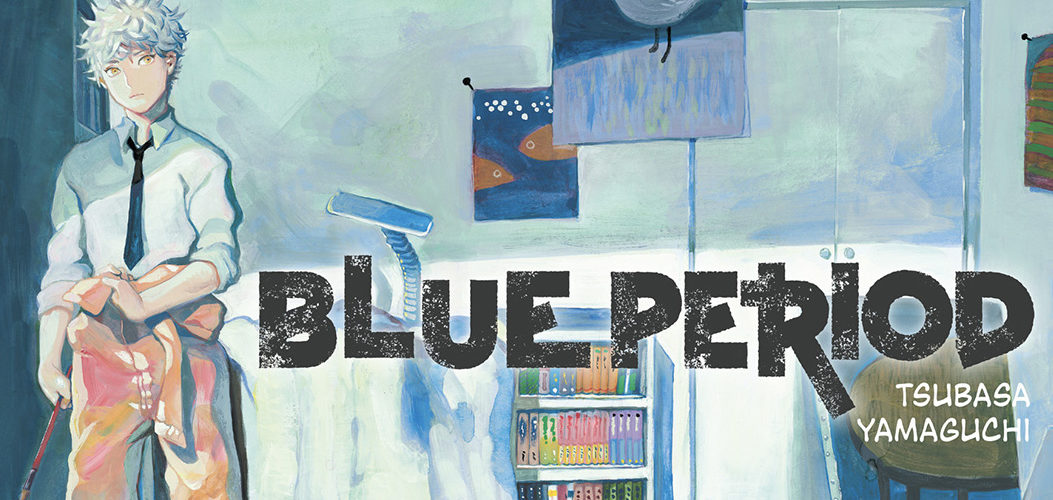
This week on Mangasplaining, Deb leads the crew through a book that sort of sums up some of the themes of Season 2, with an autobiographically-informed piece of art about art, and a story that’s very similar to another title we talked about in a previous episode. Tsubasa Yamaguchi’s hit manga Blue Period gives the team a lot to talk about!
Powered by RedCircle
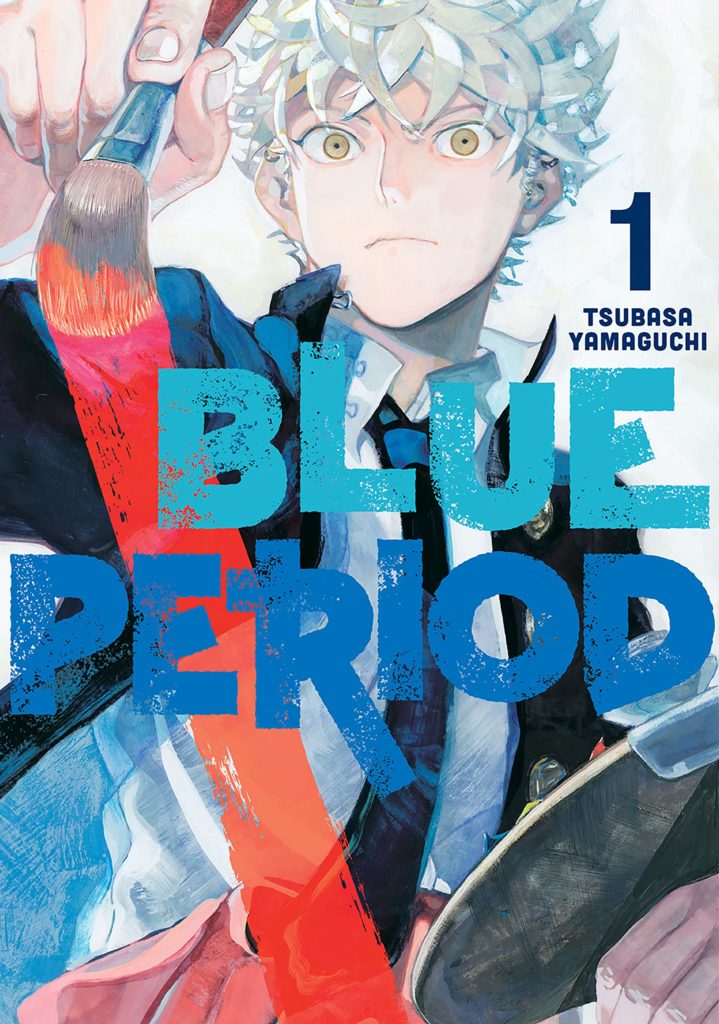
Blue Period Volume 1
By Tsubasa Yamaguchi
Translation by Ajani Oloye
Lettering by Lys Blakeslee
Editing by Haruko Hashimoto
English cover Designed by Matthew Akuginow
Published by Kodansha Comics (Print/Digital)
Show notes by Christopher Woodrow-Butcher and Deb Aoki. Audio editing by David Brothers.
Before We Get Started:
Spoilers this episode! Not just for Blue Period volume 1, but a little bit for volume 2, too!
Here’s a bio of Tsubasa Yamaguchi:

Tsubasa Yamaguchi is a manga artist best known for the book we’re reading today, Blue Period. Born in Tokyo on June 26 (no year given), the artist graduated from Tokyo University of the Arts (that plays a role later) and began to work in manga. After creating two one-shot manga stories, she created her first full-length manga, adapting the animated short She and Her Cat by Director Makoto Shinkai into a one-volume book, published in English by Vertical in 2017.
Yamaguchi launched Blue Period in Kodansha’s Monthly Afternoon magazine in 2017, and in 2019 the series was nominated for the Manga Taisho Prize, as well as the Kodansha Manga Award, but did not win. Don’t feel bad though, because Blue Period ended up getting nominated for both of those awards again in 2020, and won them both! It was also nominated from the Tezuka Cultural Prize in 2020. The series also got an anime adaptation, season one of which premiered on Netflix beginning in October 2021.
In short, people really like this manga.
[Deb:] Just as an aside, here’s a pic of an ad for the Blue Period manga that I took in Kichijoji train station back in late 2019!
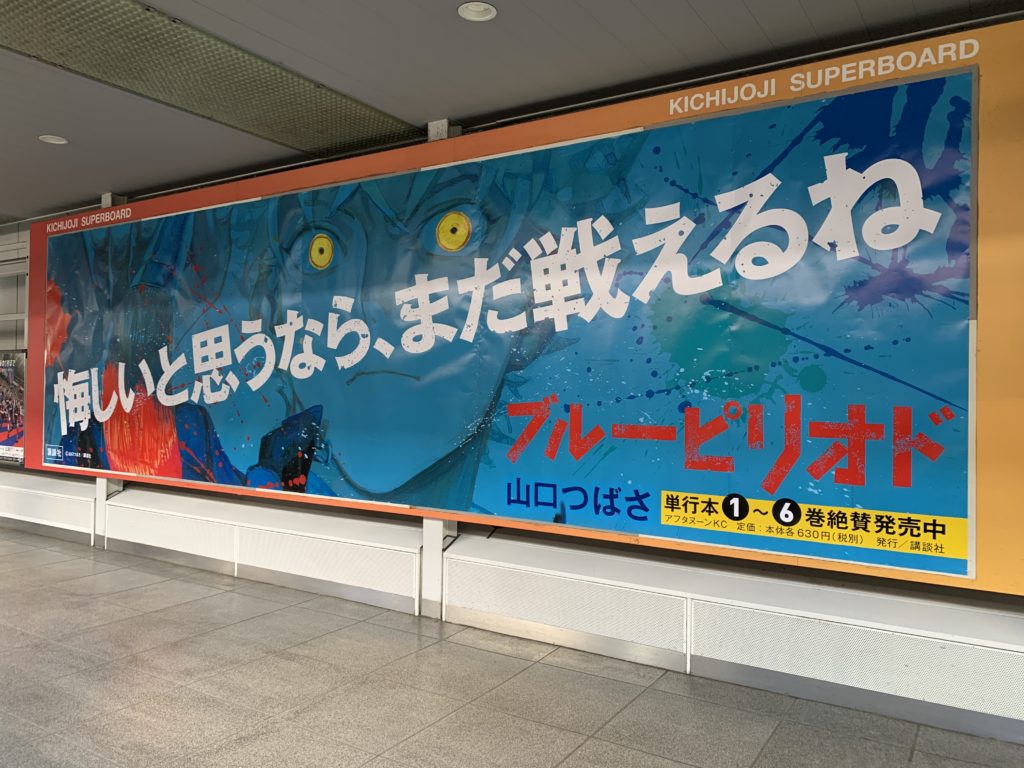
Unfortunately, on January 24th, in between the recording of this episode and when it’s going live here, Yamaguchi-sensei announced on Twitter that she had contracted COVID-19. She said she’s healing and resting, and tweeted again on February 5th, so it seems that she’s on the mend. Hope she’ll be okay!

00:45 Hey, it’s the episode where we talk about MSX: Mangasplaining Extra! As mentioned on the podcast, Deb, Christopher (hi!) and his husband Andrew have started a publishing endeavour where we are translating and digitally publishing manga via our new newsletter. You can sign-up now at MangasplainingExtra.com.
The first two projects we’ve announced are Okinawa by Susumu Higa, which includes stories from Higa’s two Japanese manga collections, Sword of Sand and Mabui, and a one-shot story These Days (Higoro), by Taiyo Matsumoto. The latter got its official English title after recording, sorry for any confusion…!
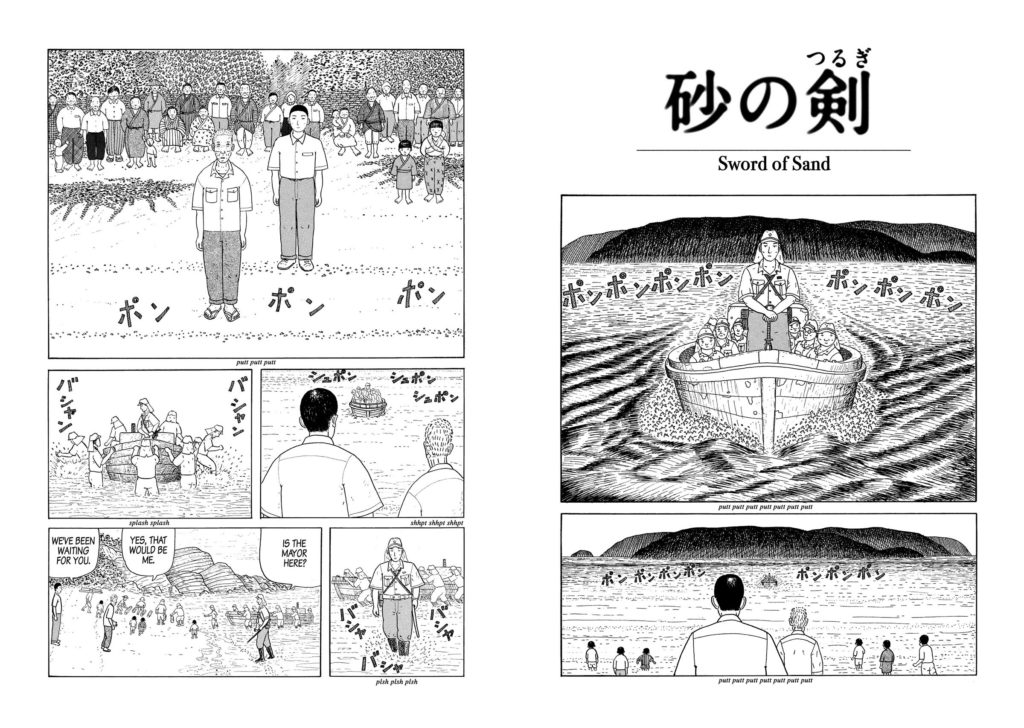
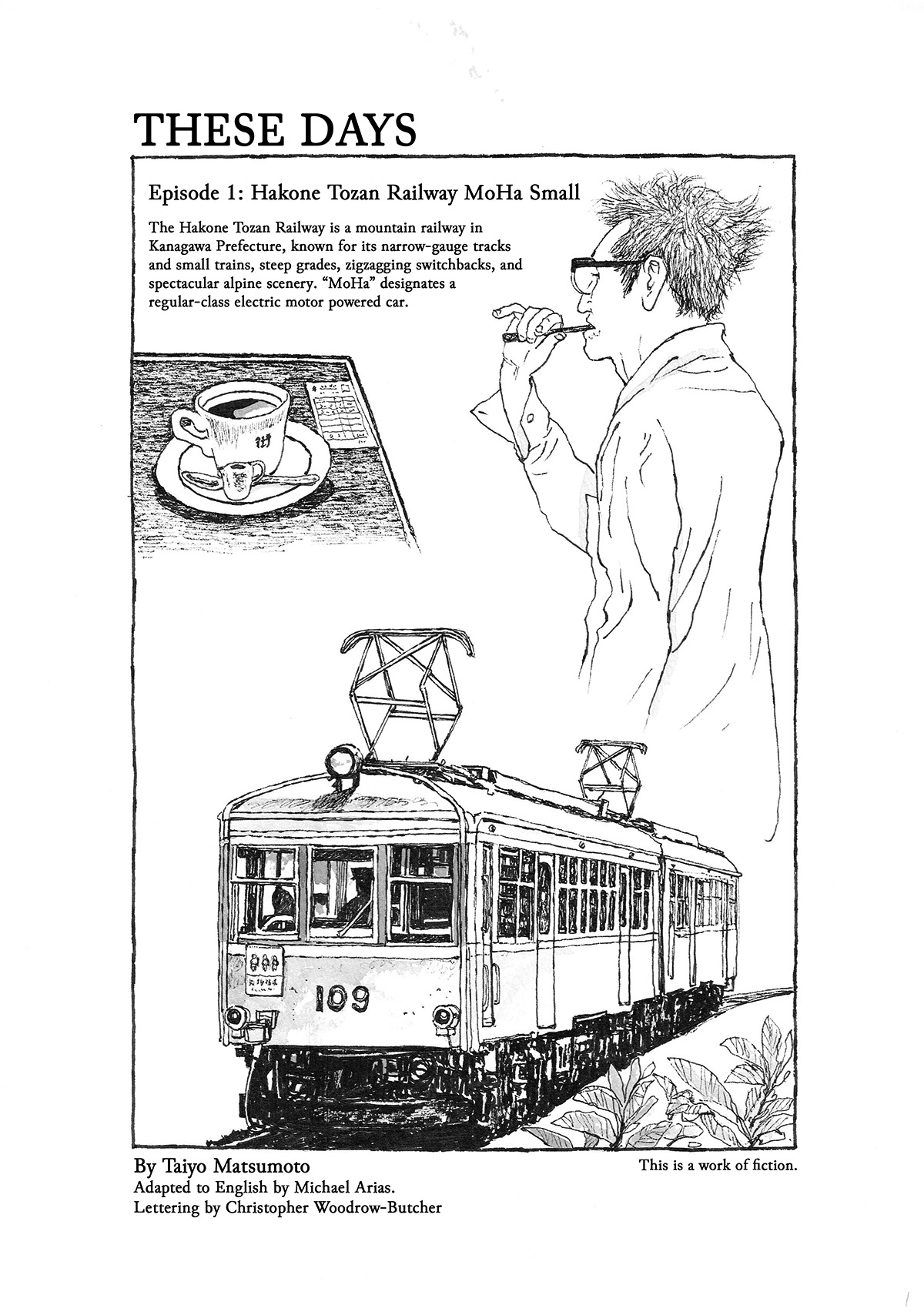
We actually just posted the first chapter of Okinawa for free to the newsletter, you can check it out now. Future manga chapters will require a paid subscription of $5 per month to read. You can also sign up for free if you just want stuff like these show notes (Hello!) emailed directly to you, plus some of the fun bonus articles and bonus manga we’re working on.
As we hinted at, we’re just finishing up the licensing process for our next two titles(!) already, and we hope to hit the ground running with those serializations as well. We have another batch of projects, including more one-shot stories in the hopper as well. It’s a lot of fun. We might actually review the books, we might not, not sure, but we’ll at least spend some time telling you about them.
Thanks so much to everyone for their support on Mangasplaining this year. 🙂 And if you have questions that we don’t answer in the episode here, you can hit up our FAQ.
05:00 Here’s how Kodansha describes Blue Period!
Winner of the 2020 Manga Taisho Grand Prize! A manga about the struggles and rewards of a life dedicated to art. The studious Yatora leaves a dry life of study and good manners behind for a new passion: painting. But untethering yourself from all your past expectations is dangerous as well as thrilling…
Yatora is the perfect high school student, with good grades and lots of friends. It’s an effortless performance, and, ultimately…a dull one. But he wanders into the art room one day, and a lone painting captures his eye, awakening him to a kind of beauty he never knew. Compelled and consumed, he dives in headfirst — and he’s about to learn how savage and unforgiving art can be!
Kodansha.us
06:00 Deb mentions the manga Blank Canvas by Akiko Higashimura, which comes up a lot in this episode! In fact we may even spoil Blank Canvas a little bit. For those of you that didn’t listen to Episode 31, Blank Canvas is a five volume manga by Higashimura, the creator of Tokyo Tarareba Girls, about her “So-Called Artist’s Journey,” her road to becoming a manga creator, going to art school, leaving her small town, etc. It also digs into the ‘how to get into art school in Japan’ question, as does today’s book Blue Period. But where the two books differ is that Blank Canvas is a straight autobiographical story by Higashimura, and Blue Period is definitely informed by the creator’s personal artistic journey, but is firmly fiction.
7:20 The “explainer” bits in this manga try to illuminate parts of the artistic process or explain things to folks who might not understand any of this ‘art’ stuff. They’re pretty dense when they occur! Here’s an example from the beginning of the book, but there’s a lot of this throughout this first volume.
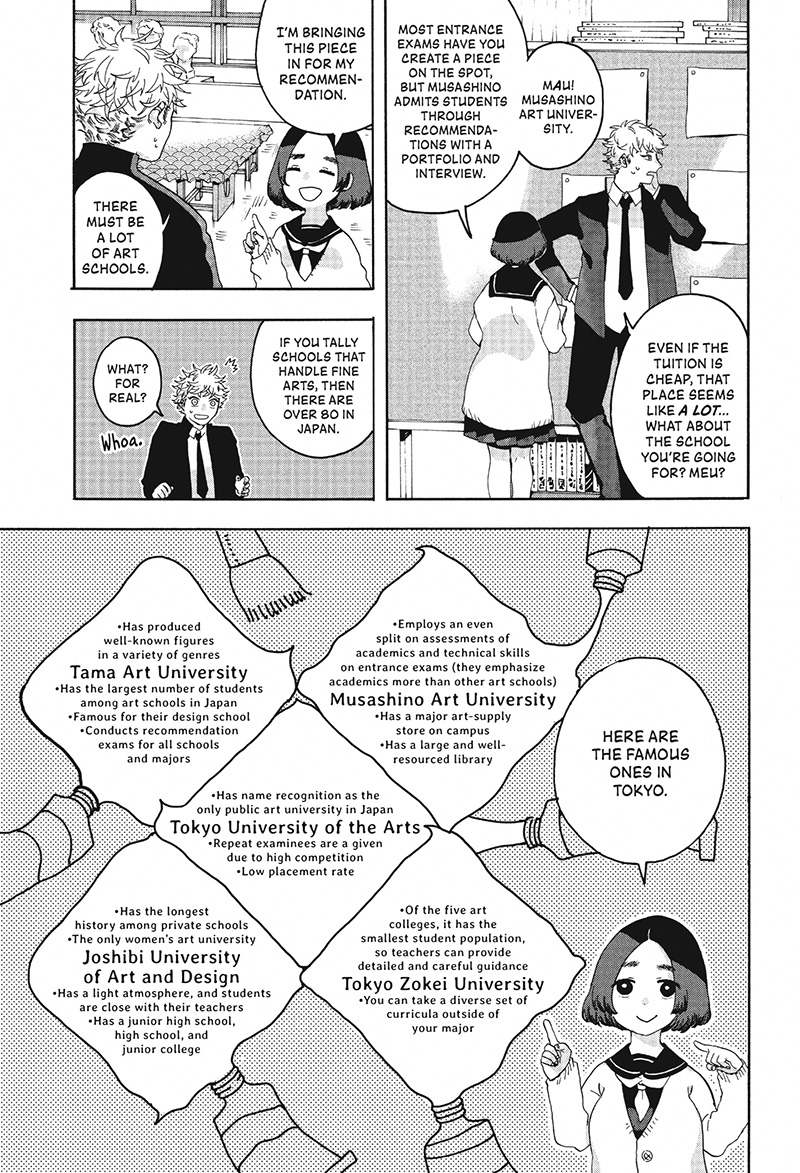
9:40 Expanding on that ‘explainer’ bit that Chip mentions is this weird, circular logic segment on why to go to art-school. The teacher who delivers this bit is a great character, but this is the part of the book that feels least like a story and most like the author speaking to the reader in their own voice, and it’s… a little rough.
12:45 Chip is right though, the color pages are gorgeous.
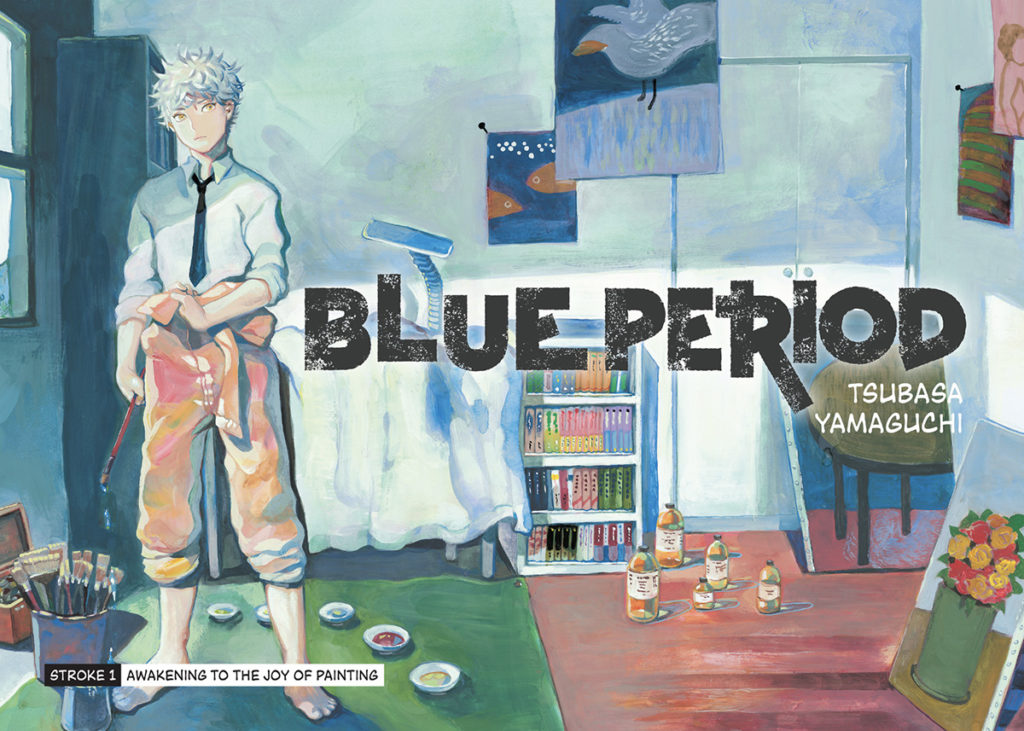
I’m including a spread here, but if you want to see allll of the gorgeous color pages, Kodansha has the first chapter of the book up for free on their website, color pages included.
13:30 David mentions the manga Slam Dunk by Takehiko Inoue, a basketball manga (THE Basketball manga) that ran in Weekly Shonen Jump from 1990-1996. It is credited, no lie, with introducing basketball to Japan and popularizing it among the youth of the country. It is a truly beloved series. I gotta be honest, I bounced really hard off of this series for first 2 or 3 volumes. It’s more of a 1990s-style Shonen Jump comedy with a high school basketball team setting, but Inoue-sensei really comes into his own over the course of the series. I actually picked up a random volume from later in the series to see what I was missing and the tone changes quite a bit 10 or 15 volumes in. Maybe one day I’ll put it back on my re-read list.
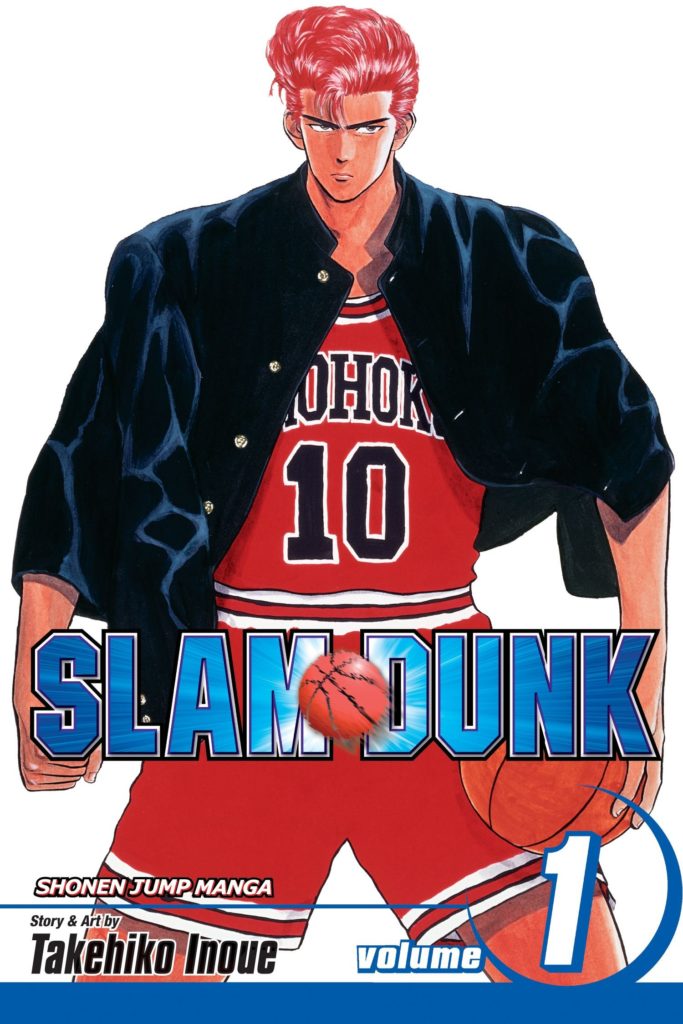
Since we’re unlikely to cover this manga on the podcast, let me share this little factoid here: Slam Dunk has a REALLY interesting publishing history in North America, that’s largely lost to time. In short, Inoue-sensei pulled back all of the publishing rights to Slam Dunk in Japan, along with a few of his contemporary manga-ka who were similarly huge sellers for Shonen Jump in the 1990s, like Tetsuo Hara (Fist of the North Star) and Tsukasa Hojo (City Hunter). They controlled their publishing rights directly, some licensed back to JUMP in Japan and some became the foundation for a new company, Coamix, but most importantly to you and I, they decided to publish their genre-defining works directly in English, starting the new company Gutsoon!, and weekly manga magazine Raijin Comics.
[Deb:] This venture was led by Nobuhiko Horie, who was the former editor-in-chief of Weekly Shonen Jump during this “golden age of Jump.” Coamix is the publishing home for manga by Tetsuo Hara and Tsukasa Hojo, through its online and print publications, including Monthly Comic Zenon. Coamix also runs a contest for aspiring global comics creators called Silent Manga Audition, which includes a website that’s chock full of fascinating videos about manga, with many subtitled in English.
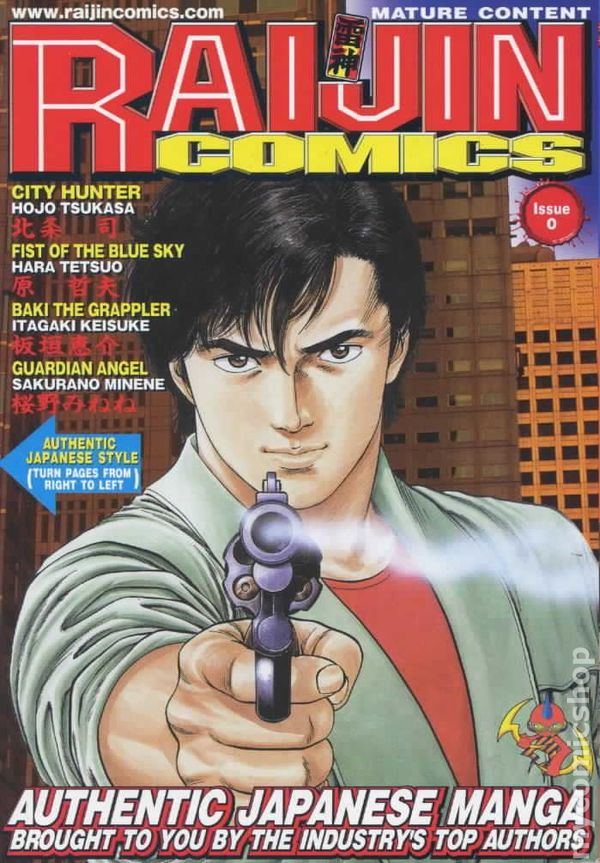
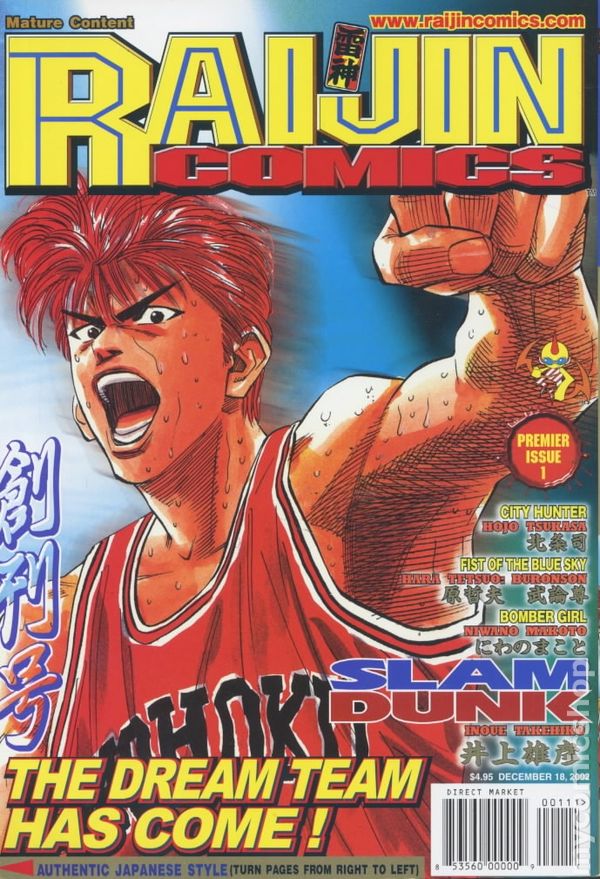
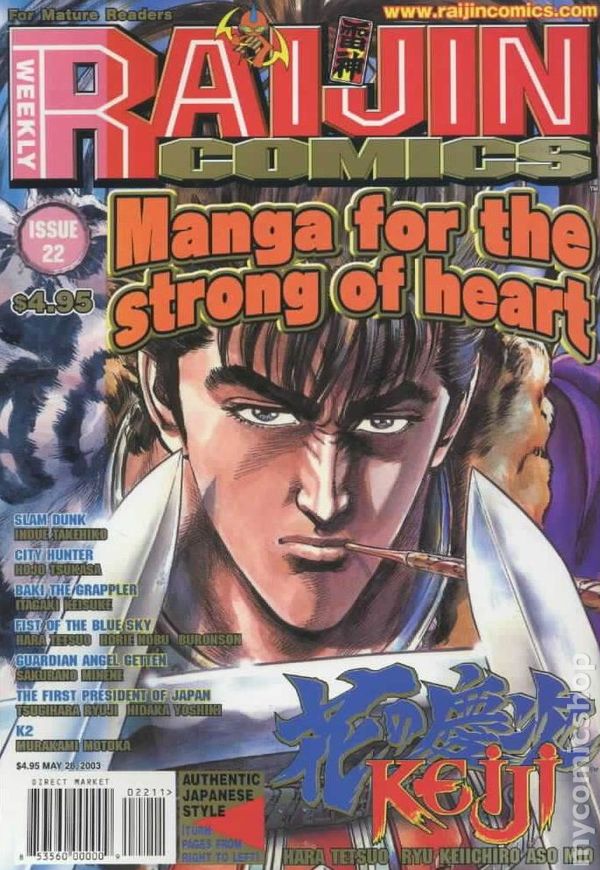
[Christopher:] One day I’ll write a whole essay about my feelings about Raijin Comics, but the short version is that the first five volumes of Slam Dunk appeared in English from Raijin from 2003-2004, and they were one of many companies that kickstarted the first manga boom (and maybe contributed to the manga bust that followed). Like many companies around that time, they made a huge splash and went under pretty quick. 36 weekly issues and 10 monthly issues of the magazine were published before the publisher folded in North America.
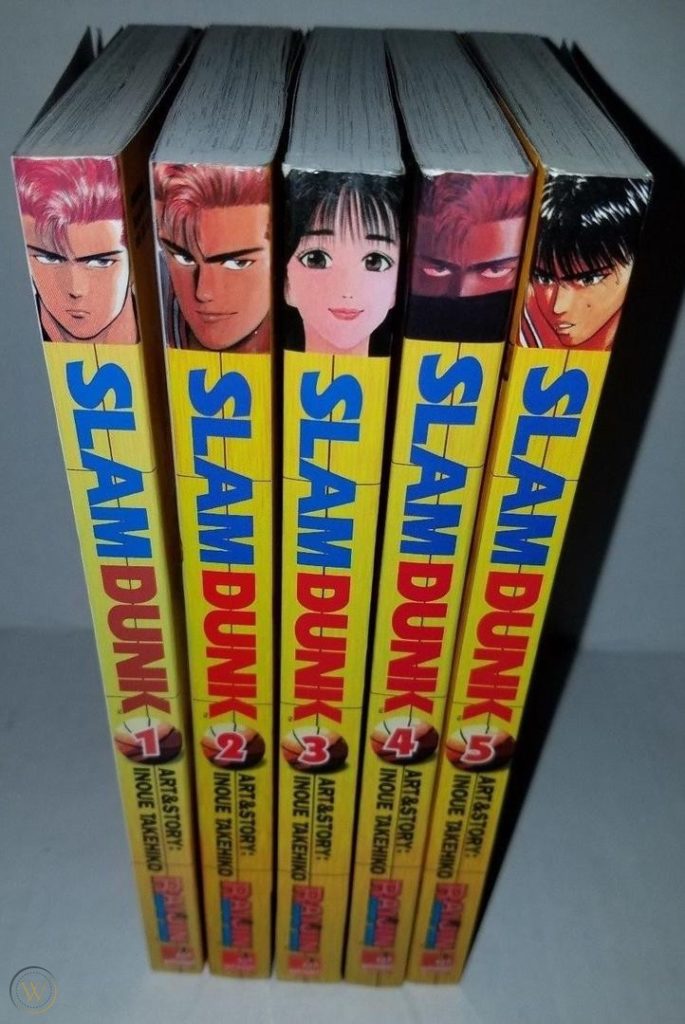
After Raijin Comics ceased publication, VIZ licensed the rights to Slam Dunk and began publishing it as part of Shonen Jump magazine, the title’s original Japanese home, in 2007. VIZ published all 31 volumes, once upon a time, but as of right now it looks like every volume is completely out of print, and is not available digitally. Looks like Inoue-sensei still has a firm handle on those publishing rights, and isn’t interested in digital editions of this work yet. Still, given what seems to be a successful publication of Fist of the North Star from VIZ, maybe a new edition of Slam Dunk could make its way to North America some day.
[Deb:] Real is available digitally, but his other series, Vagabond and Slam Dunk are not, or at least not yet. I’m hoping that the upcoming Slam Dunk movie (which is in the works now) will rekindle interest in this manga series and maybe inspire new editions of this manga (including maybe a digital release), so new readers can discover how cool it is. We also *really* need to talk about sports manga in Season 3!
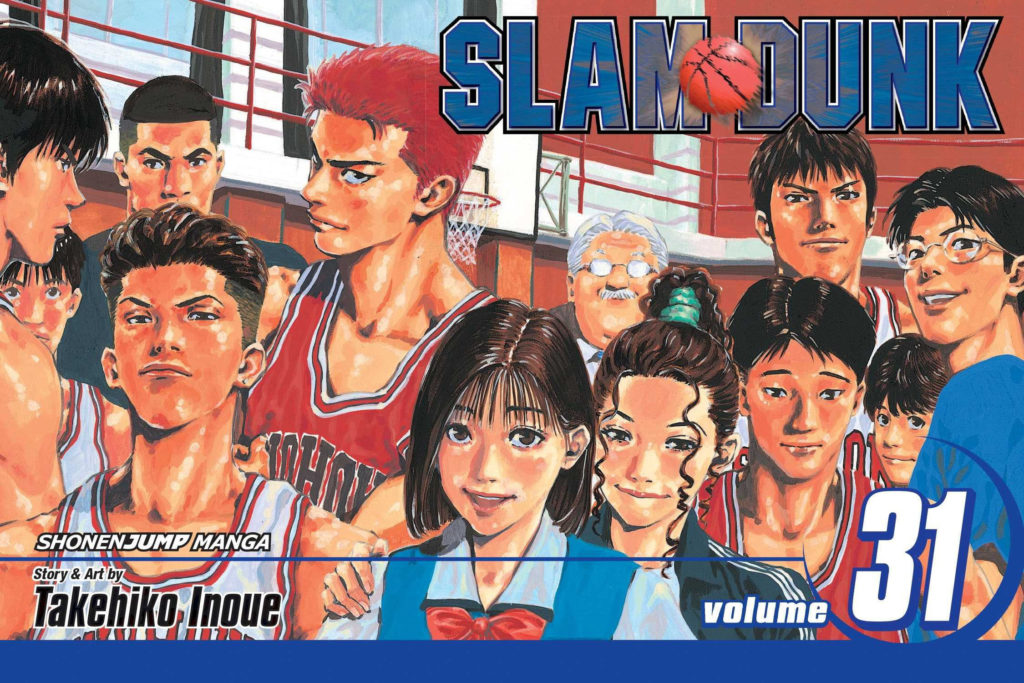
17:15 Yamaguchi-sensei uses real student drawings from real art students to sub-in for the student artwork in this volume, it’s really cute and great. She takes time at the end of the volume to thank everyone as well, which is so sweet.
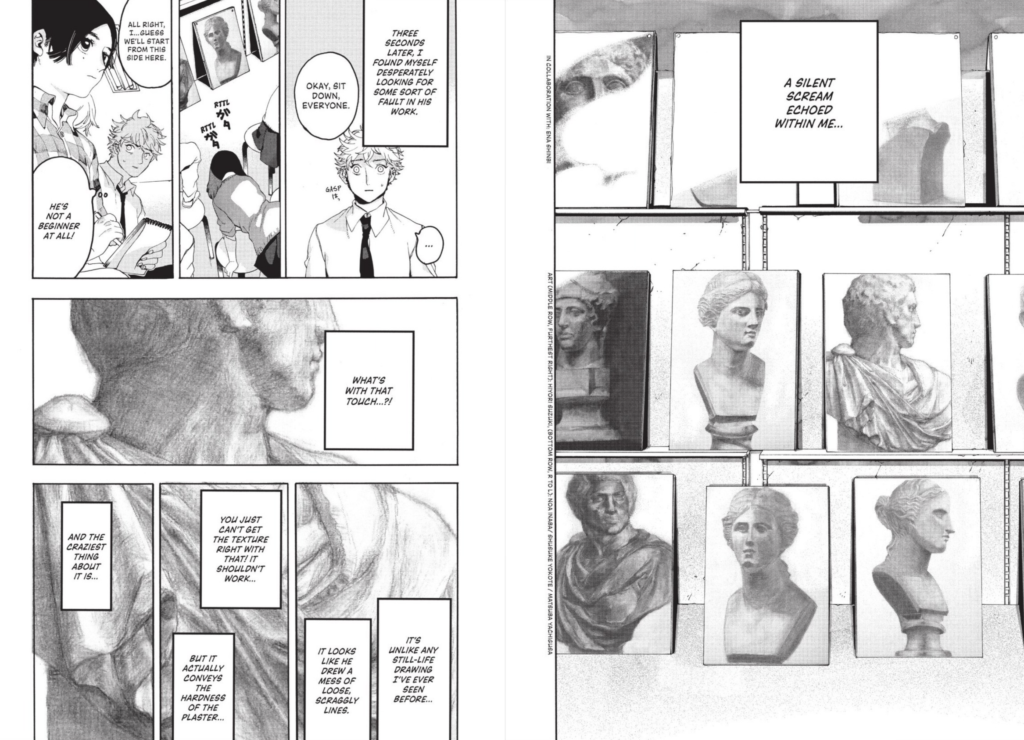
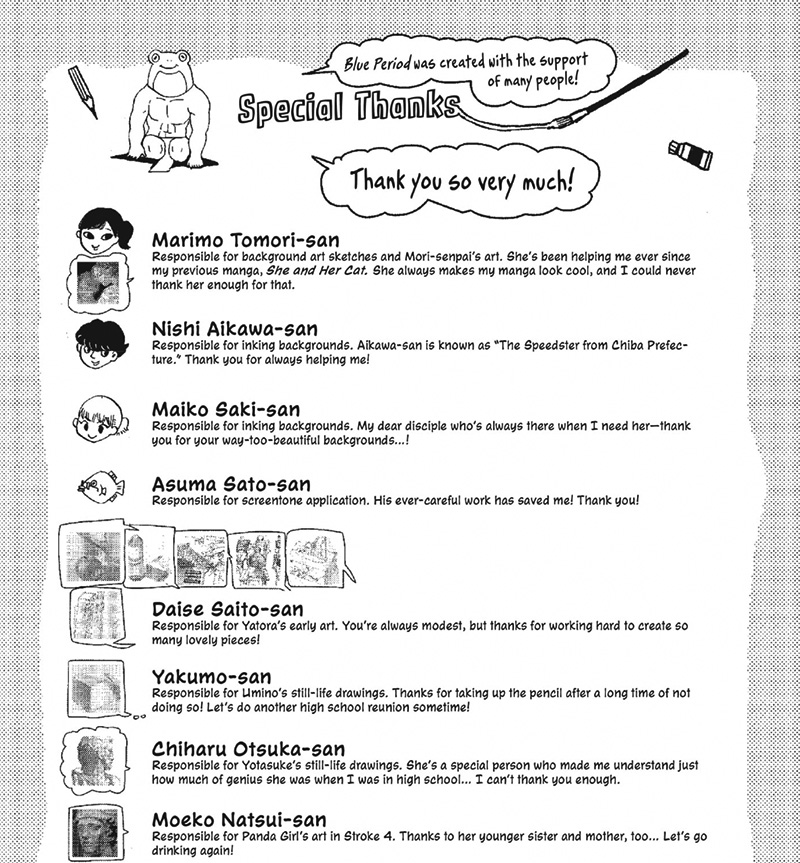
18:20 The sequences of Yatora when loses himself in art, either with the physical paintings he encounters in chapter 1, or the sequences where he’s tumbling over Shubiya or over rooftops, are some of the strongest in the series. It’s a great way to show the feeling of being moved, transported by artwork, and it’s perfectly suited to the manga medium.
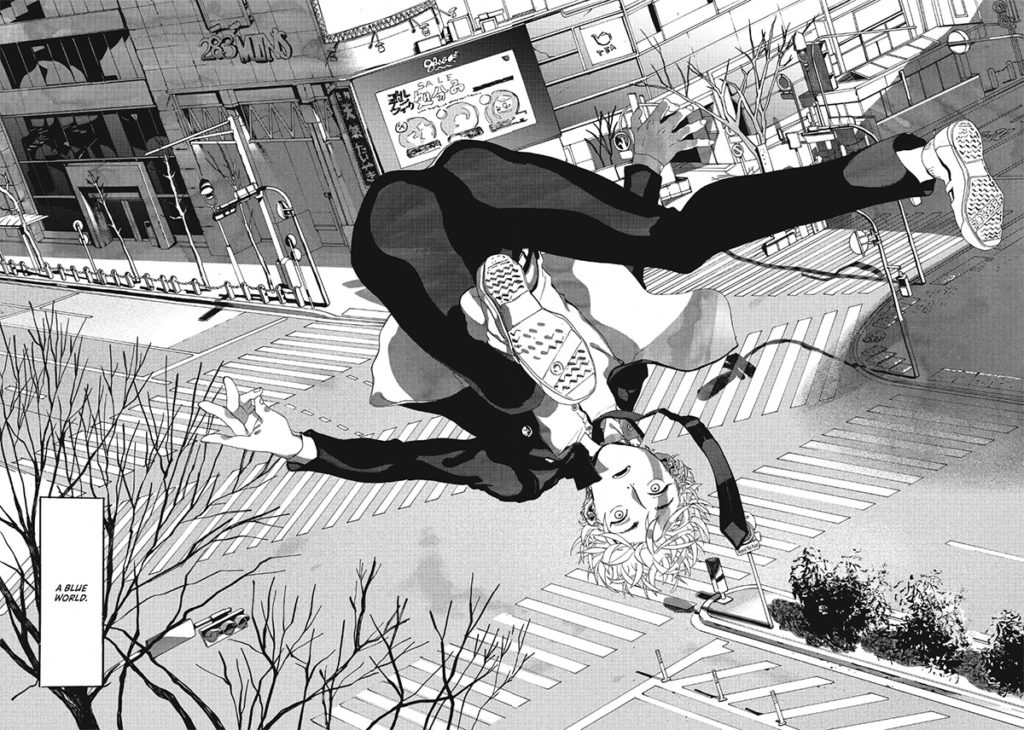
18:45 Deb had a bit of last-second regret before the podcast started, because one of her favourite sequences (and one that affected her most directly) was actually in… volume 2! Curse of the podcast I guess. Still, this sequence of Yatora talking to his mom about why he wants to go to art school really is impressive, and important, and I hope it manages to help some of the kids struggling with not feeling (or being) supported, and the parents who weigh wanting what’s best for their kids with what their kids need. Really good stuff.
–
–
20:00 Christopher mentions the manga Ping Pong by Taiyo Matsumoto, a table-tennis manga, and Cross Game by Mitsuru Adachi, a baseball-themed manga, both of which are available in print and digital from VIZ Media.
Ping Pong is about two boys, Peco and Smile. Peco is naturally gifted at playing table tennis, and is an outgoing extrovert who protects Smile and takes him under his wing as the two grow up together. Smile seemingly has no natural talent for ping pong, but may be hiding his true abilities out of fear of losing his friend. The manga talks about ‘talent’ and ‘gifts’, but also determination, and finding meaning and joy in your work and hobbies and life. It’s good stuff. 5 volumes in Japan, 2 omnibus volumes in English, print and digital.
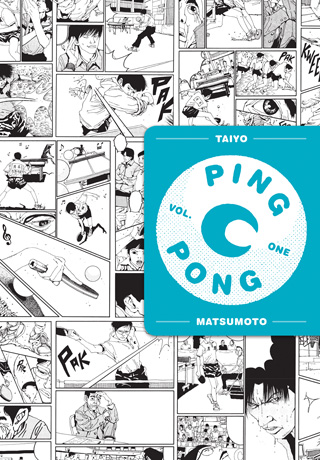
Meanwhile, Cross Game is ostensibly about a high school baseball team that wants to make it to the national championships… But man, it’s really about so much more than that. A gripping manga that moves you so expertly through the story that you need to force yourself to slow down and appreciate it. It’s available as 8 omnibus volumes, print and digital.
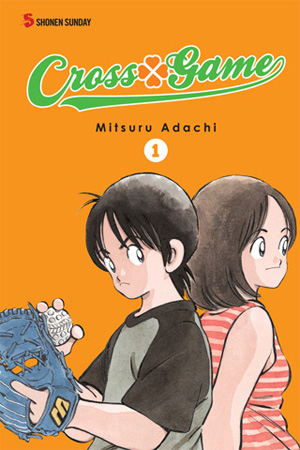
26:40 We learned something this week, so why not share it with you! Here’s something about sharpening your pencil!
[Deb:] One thing I love about Blue Period is that it shows real places in Tokyo. One of my personal favorites is Sekaido, the big art supply store in Shinjuku. Here’s Yuka introducing Yatora to “Seikido” and how to pick a good paint brush.
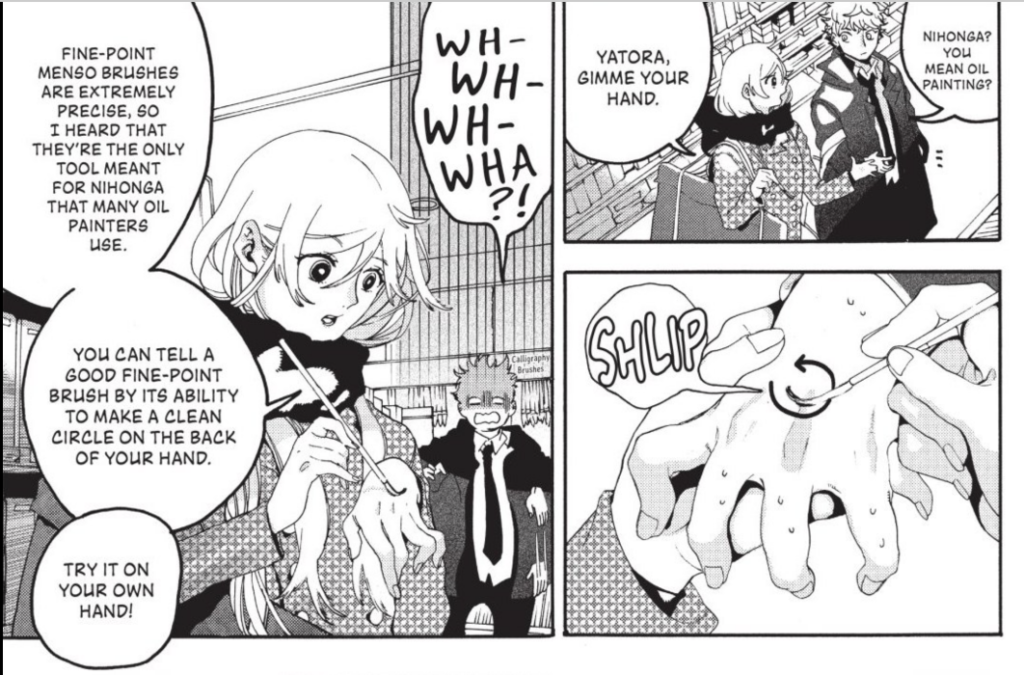
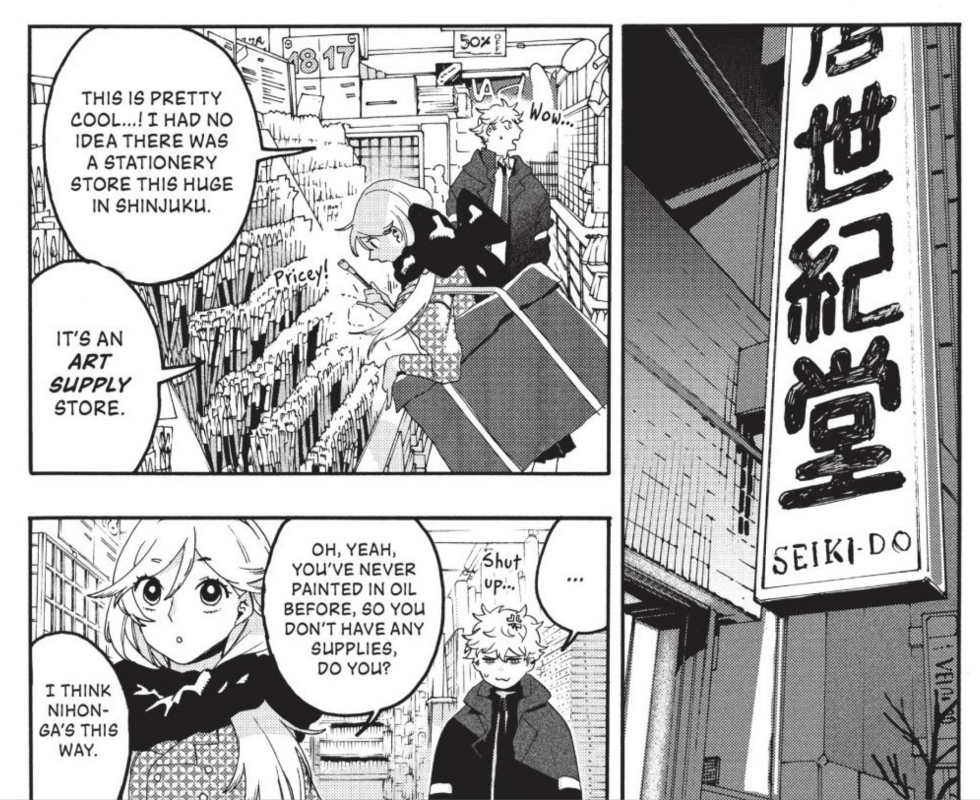
28:00 [Deb:] So what’s the difference between being gifted or “talented” and working hard? Yatora grapples with that when he encounters Yotasuke Takahashi, a classmate at the art “cram school” he attends, who seems to be effortlessly artistic. Yuka’s response to Yatora’s complaints is a pure sports manga-type moment. (read these pages right to left)
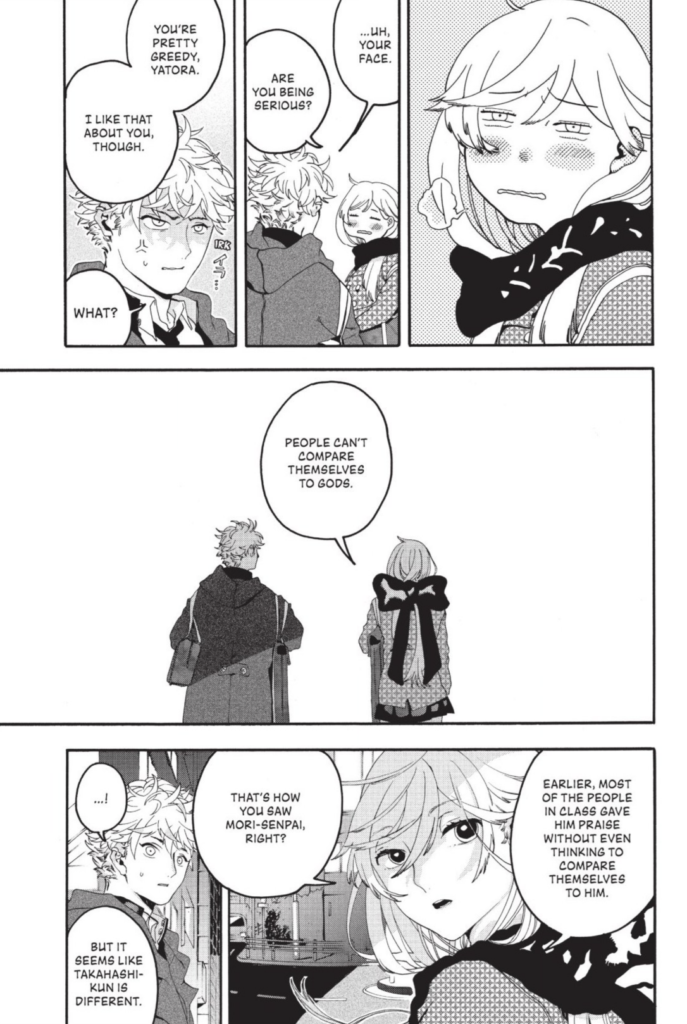
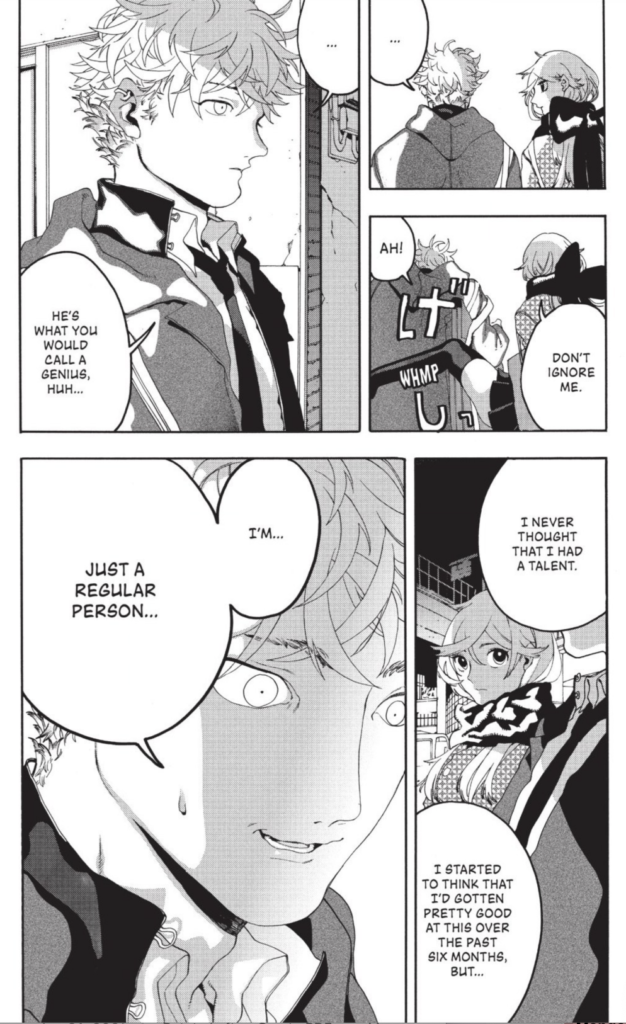
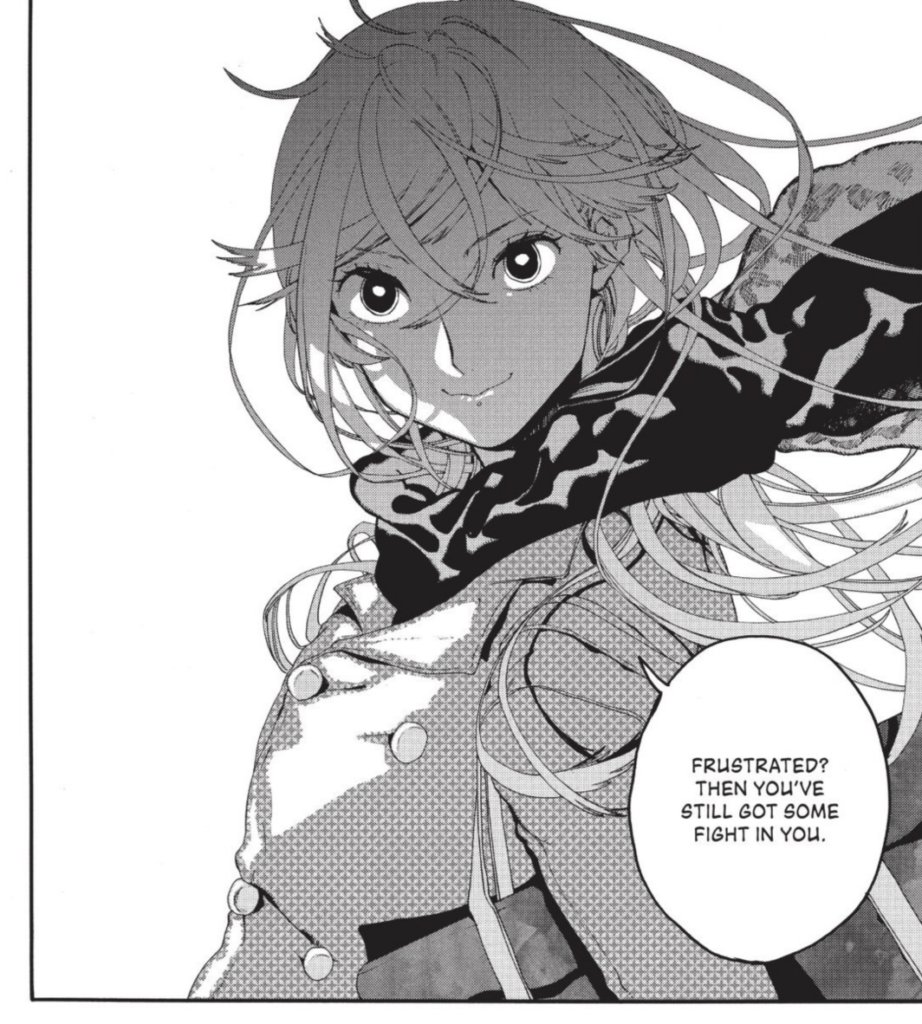
28:51 David is referring to this song by Eric B. and Rakim:
I start to think and then I sink
Eric B. and Rakim, “I Know You Got Soul”
Into the paper like I was ink
When I’m writing, I’m trapped in between the lines,
I escape when I finish the rhyme
I got soul
30:30 I think we were all a little confused about how the character who was ‘cross-dressing’ identified at first. She goes by the name Yuka, but our protagonist Yatora refers to her by her previous name at times. It’s deliberately unclear in the text, because the character is still figuring things out for themselves. It’s good to hear from Deb, with minor spoilers, that this is not only addressed in later volumes but that also Yuka gets some agency and isn’t just the Queer-Best-Friend who motivates the main character… though that trope is definitely a part of this first volume. If you’re sensitive to that, watch out, but I think it’s handled just gentle enough that it might not be too bad.
It’s certainly something that pops up more and more in contemporary manga, this character reminded me a lot of Najimi Osana in the manga Komi Can’t Communicate, who seemingly has it all figured out, totally confident, but is also clearly going through some shit too. And hey, at least Yuka is the star on the cover of volume 2!
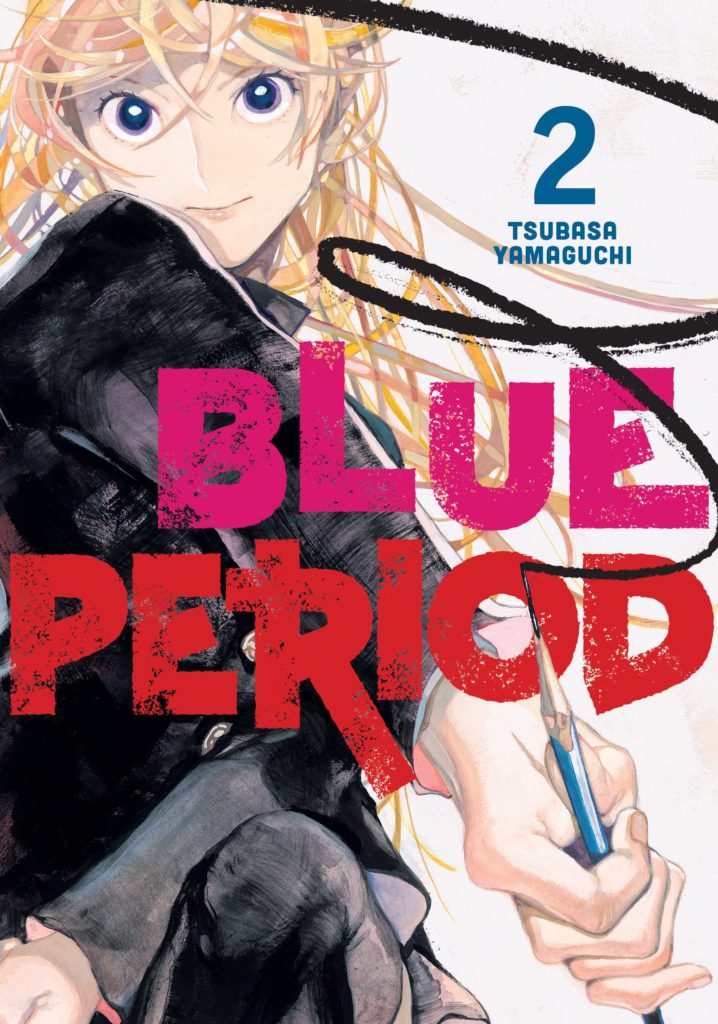
34:15 David likes when a manga says “This isn’t a manga!”
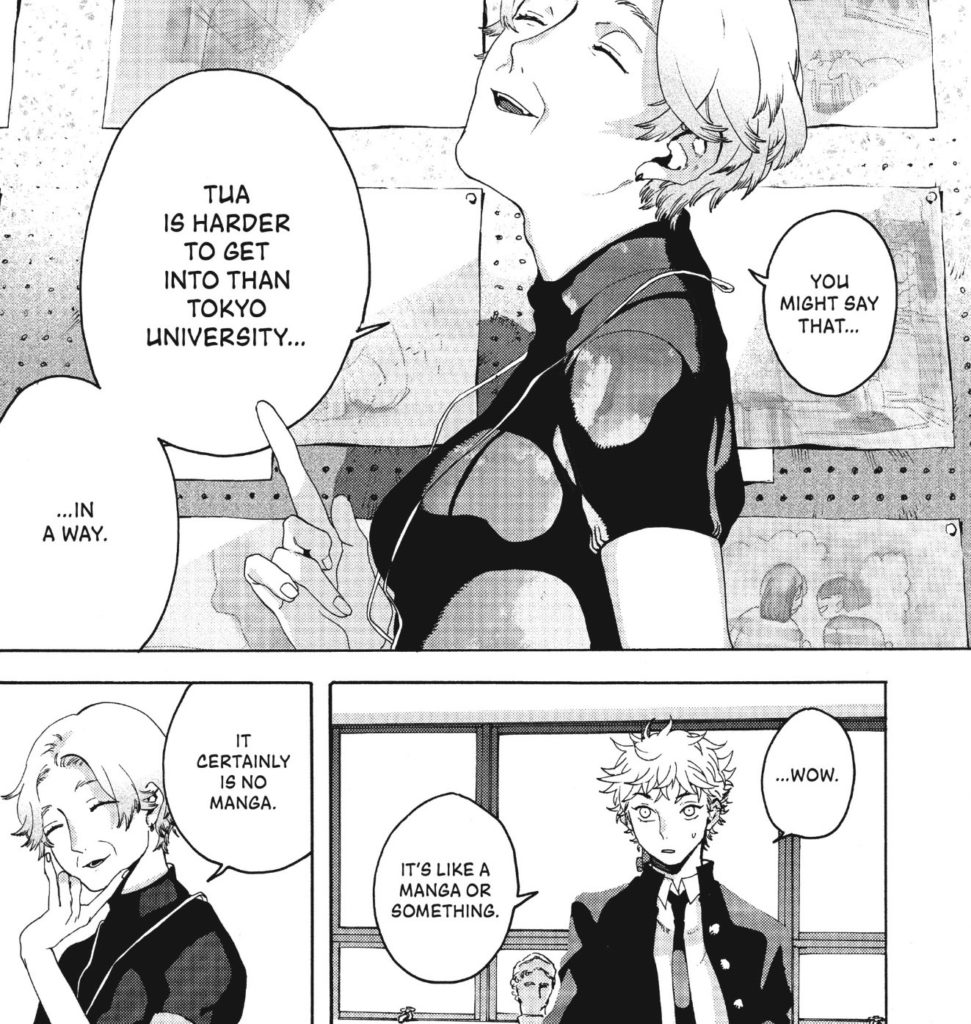
35:35 And now, a few words from Nirvana, by way of Christopher:
He’s the one
– Nirvana, “In Bloom”
Who likes all our pretty songs
And he likes to sing along
And he likes to shoot his gun
But he knows not what it means
36:00 There’s two parts to the ‘cigarette’ sequence, and it shows some amazing characterization. High-level manga stuff. In the first, Yuka is giving Yatora shit about being a ‘social smoker’ (probably a loan-word/loan-phrase in Japanese), not really enjoying smoking but just doing it to fit in with his crew.
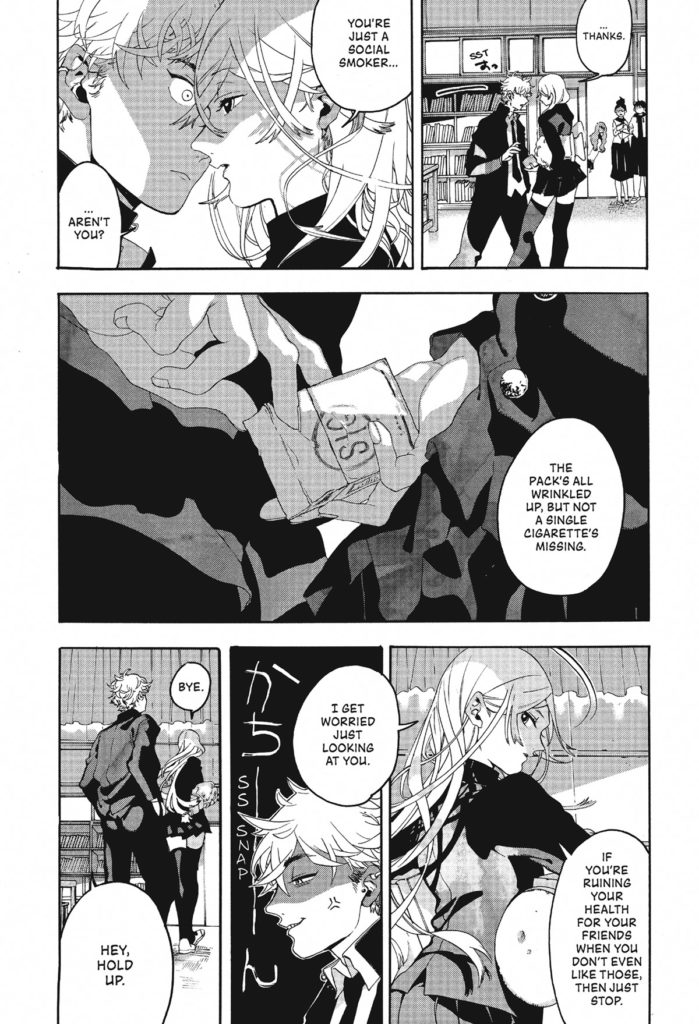
A few pages later, after a night out with the boys, Yatora is shown actively smoking a cigarette, but it’s juxtaposed with how fake he feels he needs to be to fit in with those same friends. When he does share a real thought or emotion, and gets the slightest pushback, he immediately pulls back, deflects and makes a joke. Cigarettes as metaphor. Good stuff.
…
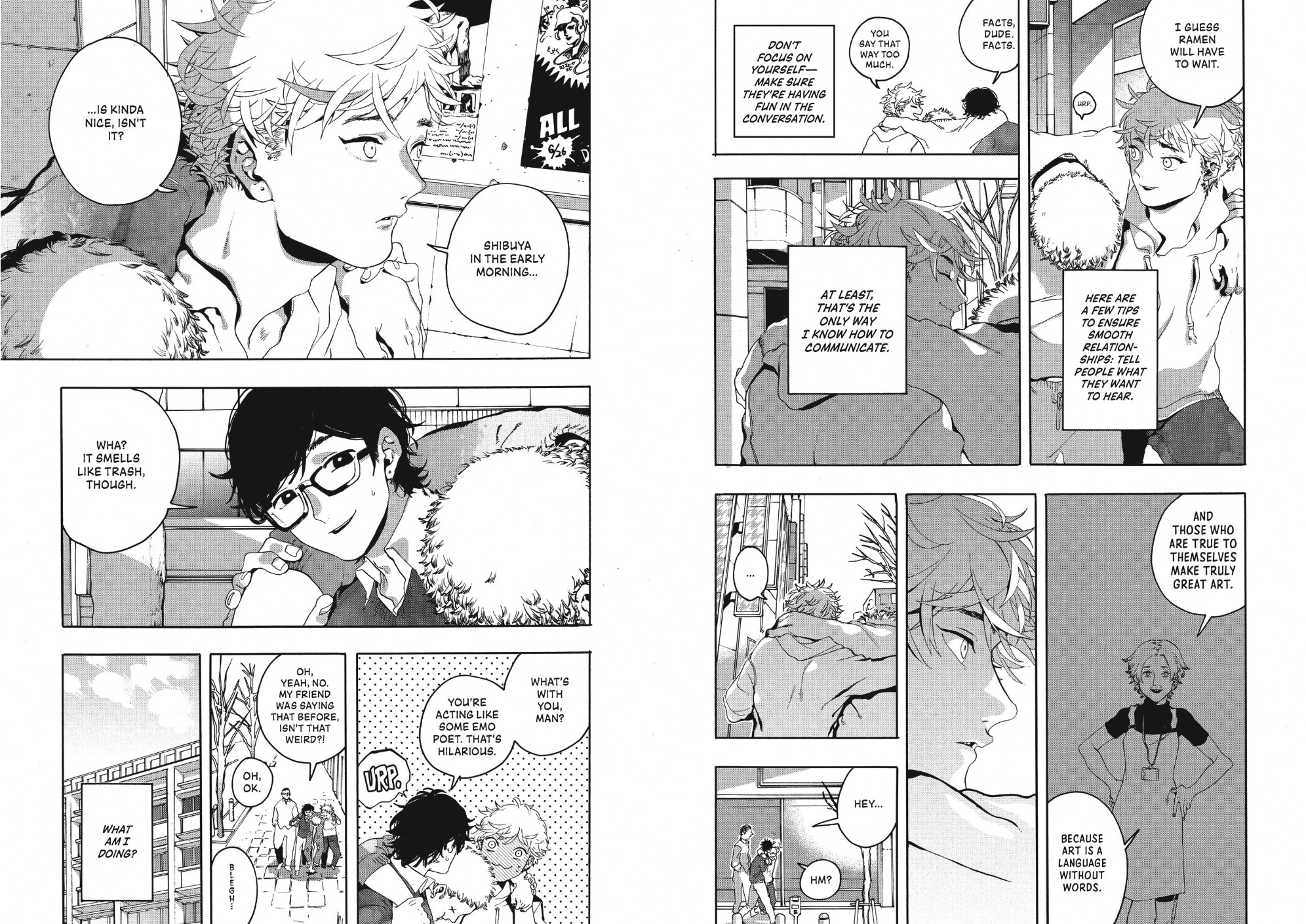
39:40 There’s an anime, it’s on Netflix!
40:26 We talked a little about Western art-school comics on the Blank Canvas episode.
46:10 Chip mentions the Mads Mikkelsen movie Another Round, which I should probably watch at some point.
48:25 Deb drew all of us after the Blank Canvas episode and it was really great. Maybe David and I will come up with a team drawing thanks to this episode?

51:13 AND IT’S THE BREAK! Please remember that after the break timestamps are off.
51:30 We’re picking books for SEASON THREE!
Christopher recommends Ping Pong volumes 1 & 2 by Taiyo Matsumoto, published by VIZ Media. It’s 1000 pages, but hey, at least it’s available as print AND digital editions!
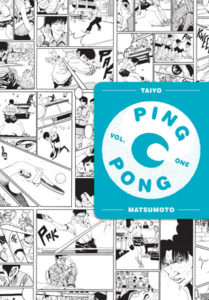
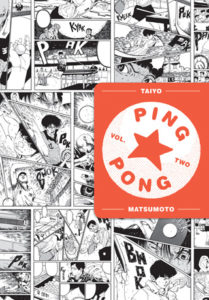
David recommends AJIN: Demi Human volume 1, by Gamon Sakurai. It’s print and digital, published by Kodansha Comics. Semi-immortal beings getting hunted, hunting each other, crazy stuff happens.
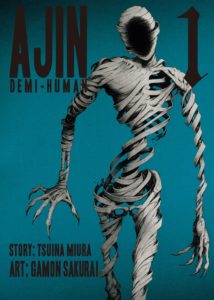
Deb recommends Birds of Shangri-la Volume 1, by Ranmaru Zariya. Published by SuBLime. It’s about a straight guy who gets a job “servicing” the “birds” / high-end male prostitutes on a tropical island resort/brothel. It’s BL manga, so stuff happens. The cover is VERY SPICY.
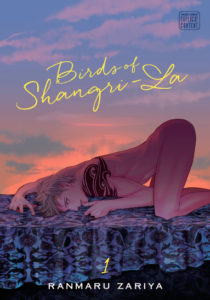
Chip(!) recommends Dick Fight Island Volume 1, by Reibun Ike. Published by SuBLime. This cover is also pretty spicy! It’s a ‘battle manga,’ but also, dudes be f**king.
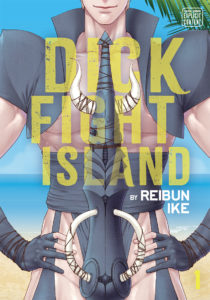
59:00 So that means that that our first book of the year is going to be Birds of Shangri-La, followed by AJIN: Demi-Human, then Ping Pong, then Dick Fight Island. That’s a hell of a first month of season 3!
It’s funny, at the time of recording we’d already ready next week’s book, a very sweet and all-ages BL love story called Our Dining Table by Mita Ori, published by Seven Seas. That BL title to these BL titles is like, 0-60 in 10 seconds.
[Deb:] Coincidentally, Yatora charms his art class classmates by showing that he “gets” BL manga.
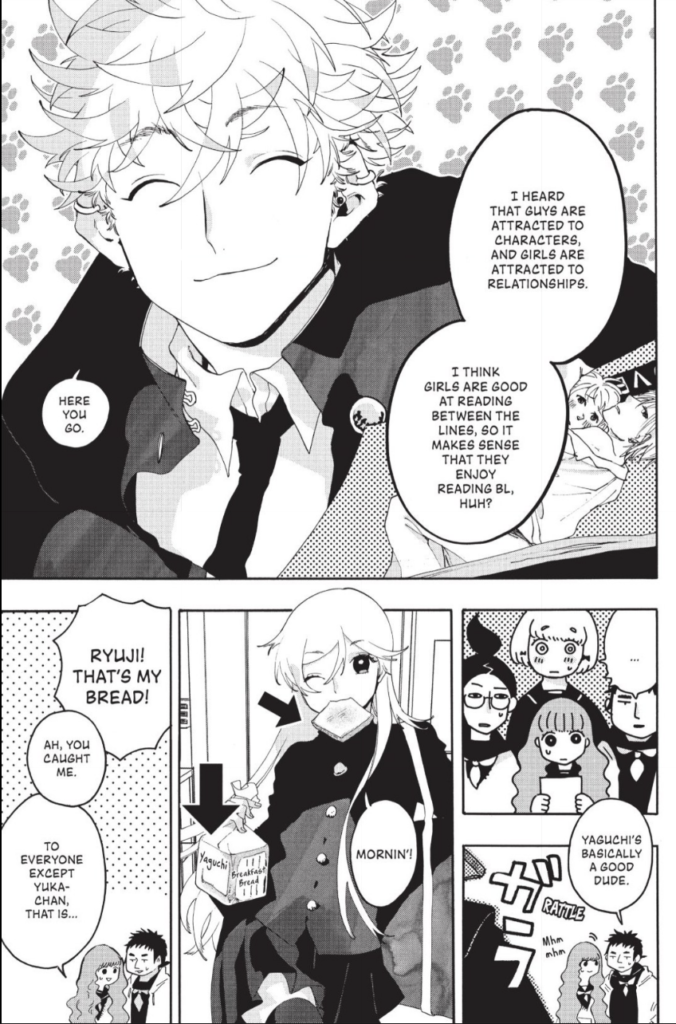
59:30 Islands are where the crazy shit happens! Panorama Island, Dick Fight Island, the Island in Birds of Shangri-la, Deb mentions the island that the movie/manga Battle Royale takes place on too. David mentions Bloodsport, and yeah, there’s an island for you. Influenced the ‘fighting tournament’ story of the Street Fighter II video game, for example. Bloodsport.
1:00:18 It’s time for SHOUT-OUTS!
Christopher recommends Barbaran/Barbarians, a subtitled swords-and-sandals historical epic on Netflix. If you like this sort of thing, you’ll like this thing.
Chip recommends The Sparks Brothers movie on Netflix. The ‘David’ I mention isn’t Mr. Brothers, btw. Check out the trailer:
Christopher also goes a little too hard for The Lonely Island Movie, Popstar: Never Stop Stopping.
David recommends Cliff Chiang’s newest work, Catwoman: Lonely City, published by DC Comics. Issues #1 and #2 are currently available, the final two issues will be out in the next few months.
Deb recommends The Beatles documentary Get Back on Disney+, and the “complete rooftop concert” documentary now screening in select locations in IMAX.
…and the ink-painting manga The Lines That Define Me, by Hiromasa Togami and Atsunori Horiuchi, about sumi ink painting. Available now from Kodansha!
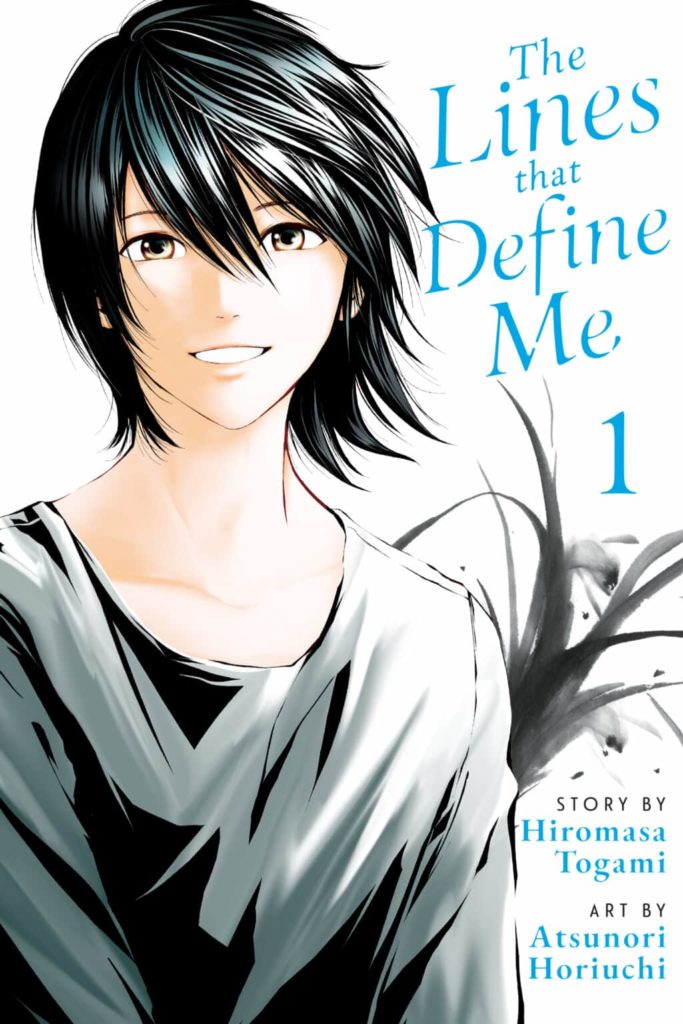
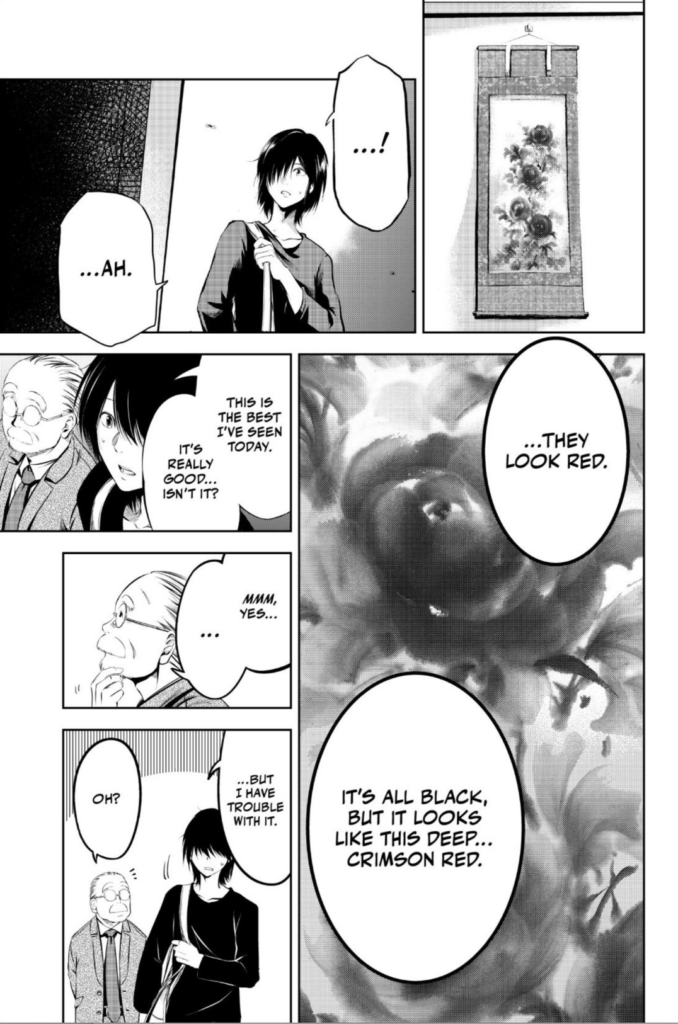
This causes David to recommend Vagabond author Takehiko Inoue’s art book Sumi, which includes his black and white ink drawings. We actually mentioned his watercolor art book last week too! This is… out of print. Sorry. Sorry.
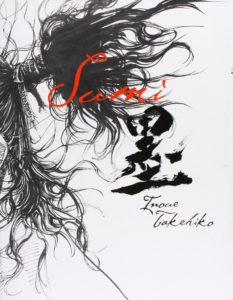
And that’s this week’s episode!
Thanks so much for reading and listening and supporting Mangasplaining! You can find a comics and manga specialty retailer near you at Comicshoplocator.com.
You can also check out our new publishing endeavour, Mangasplaining Extra, at http://www.mangasplainingextra.com.
And check out D.A.D.S. on Spotify, he made our cool theme music for us. 🙂
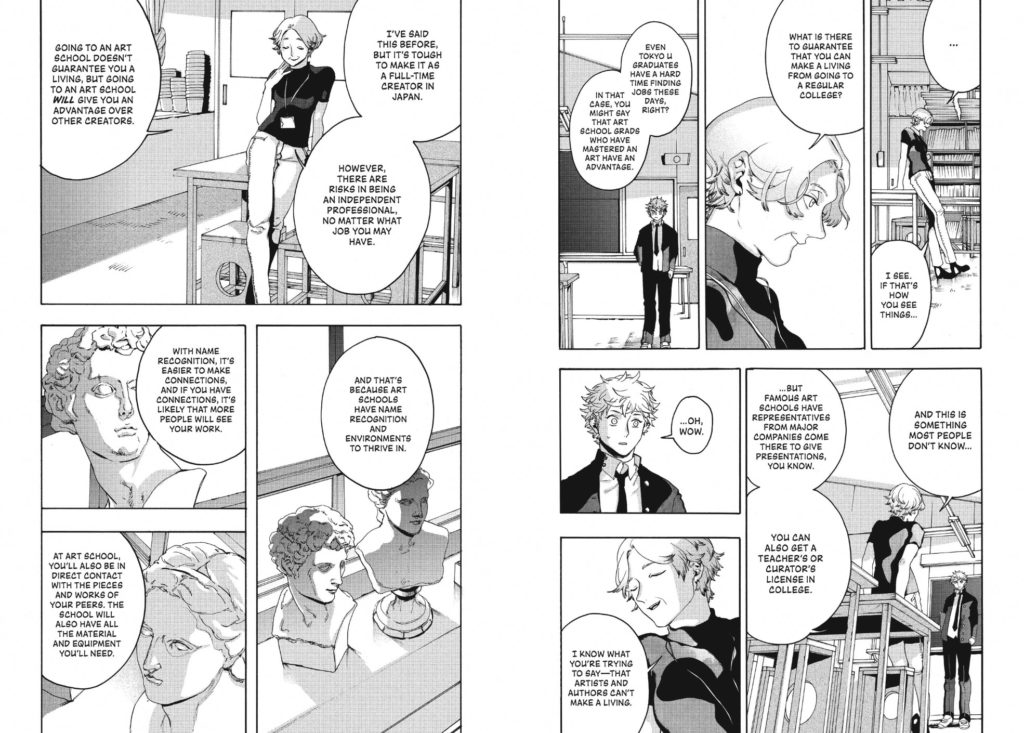
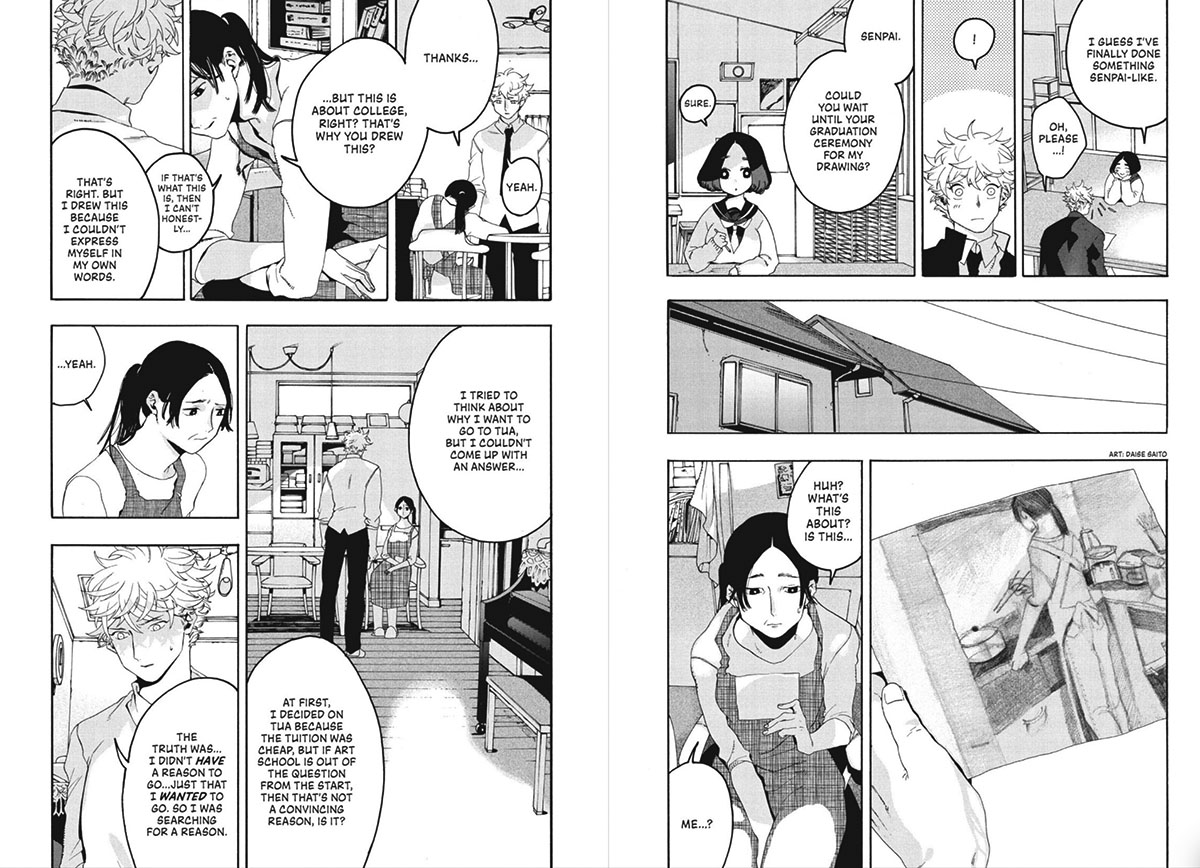
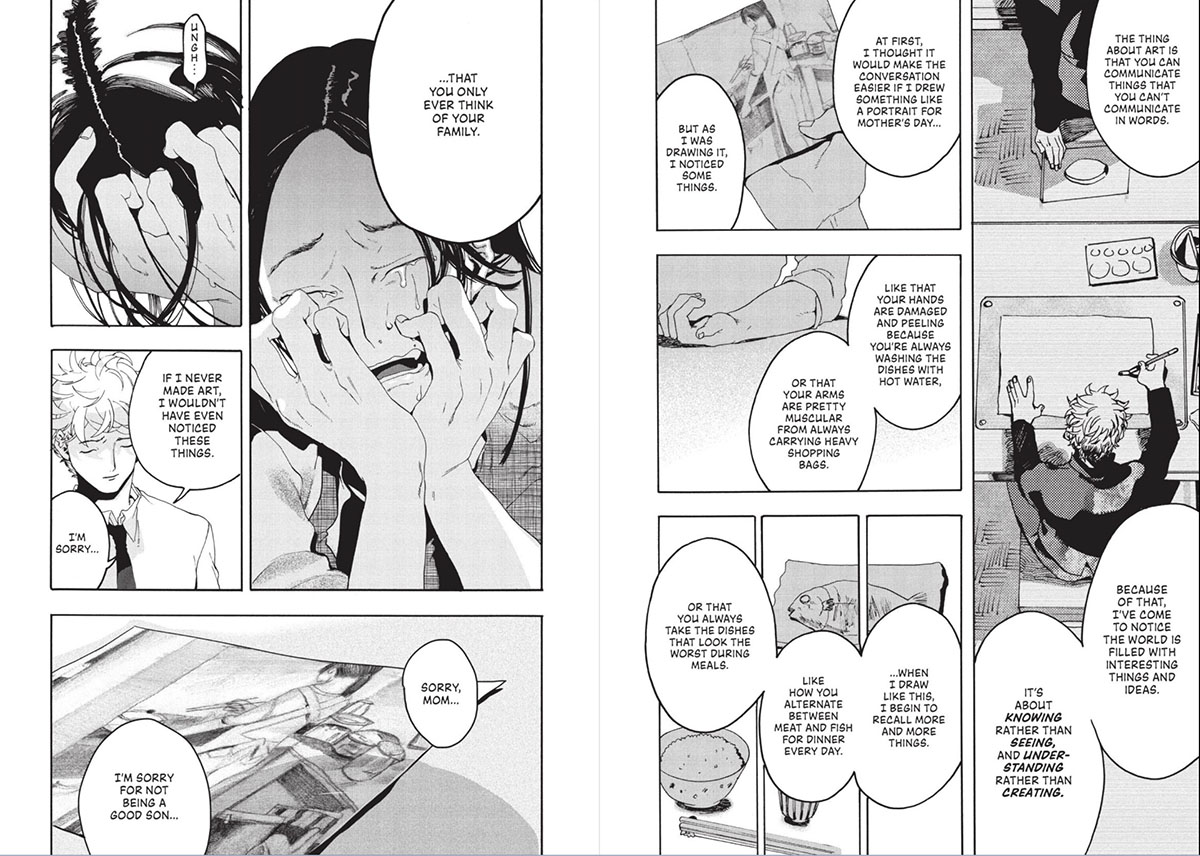
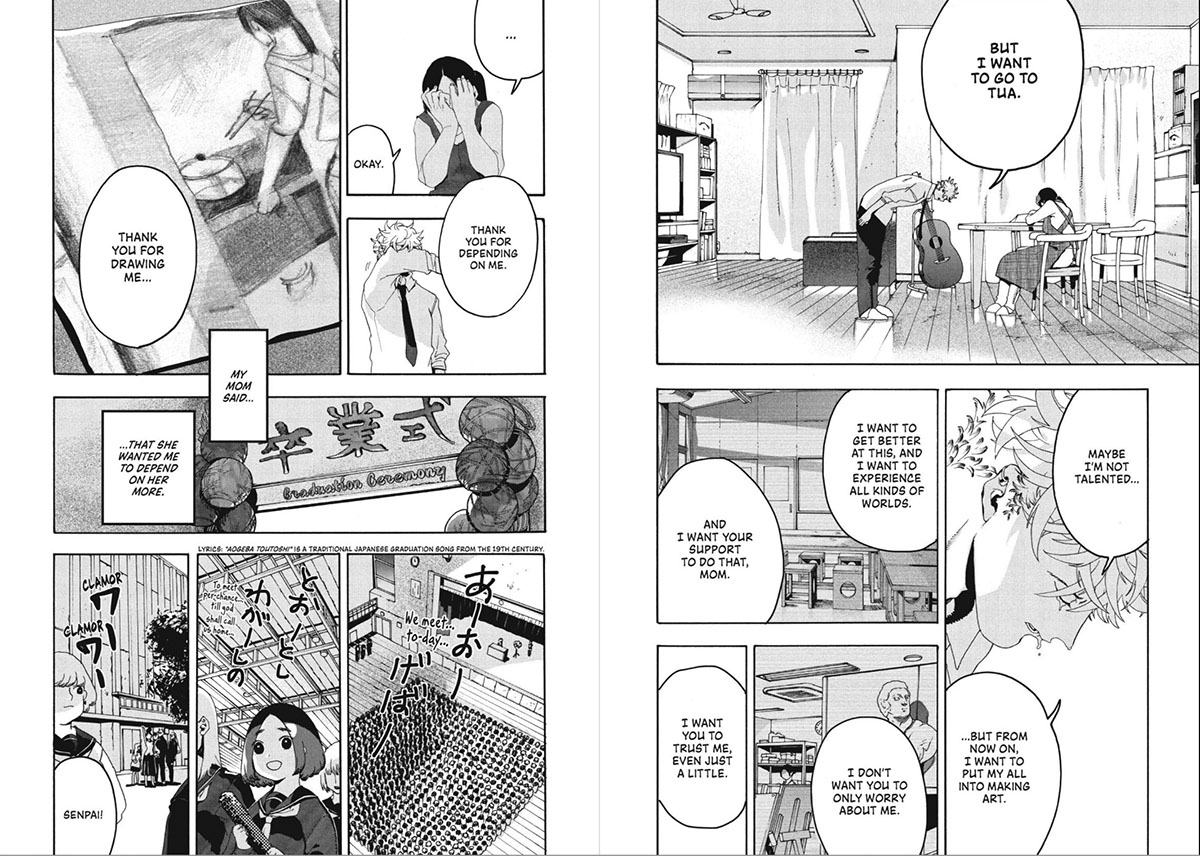
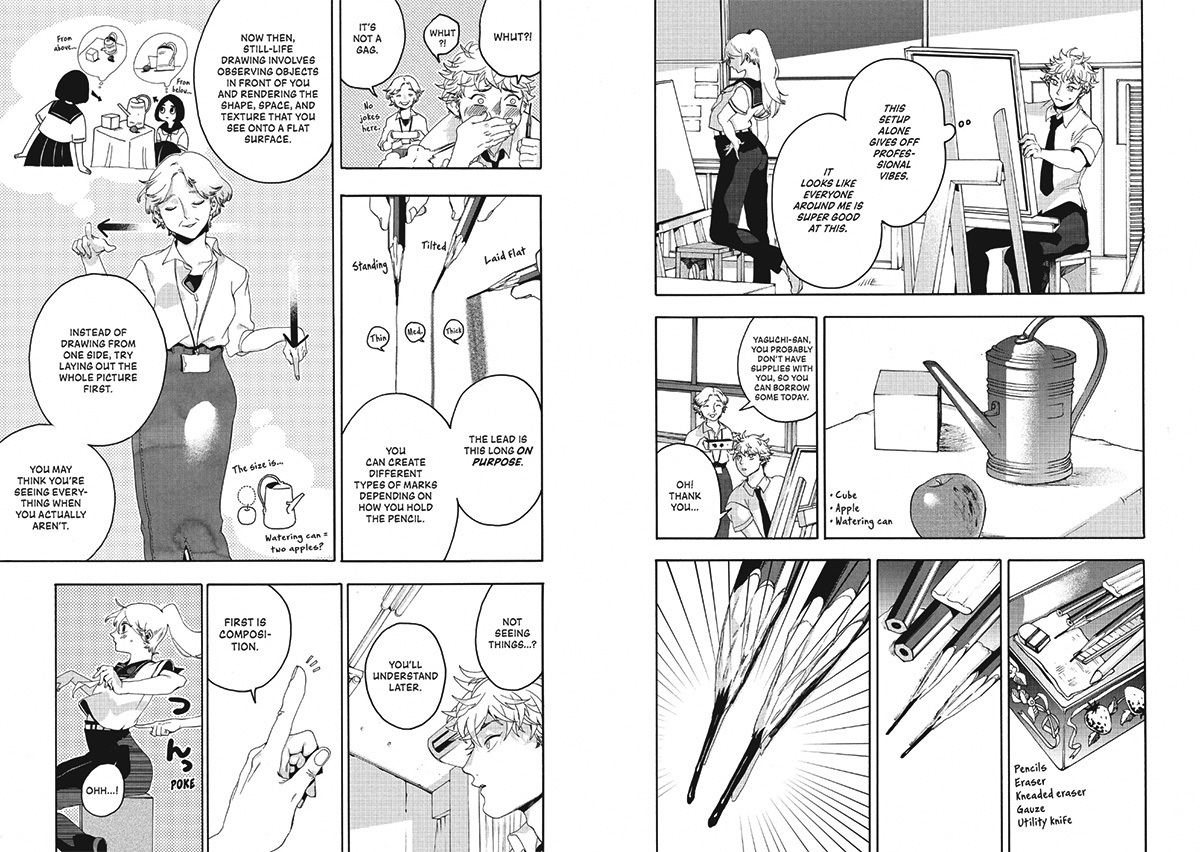
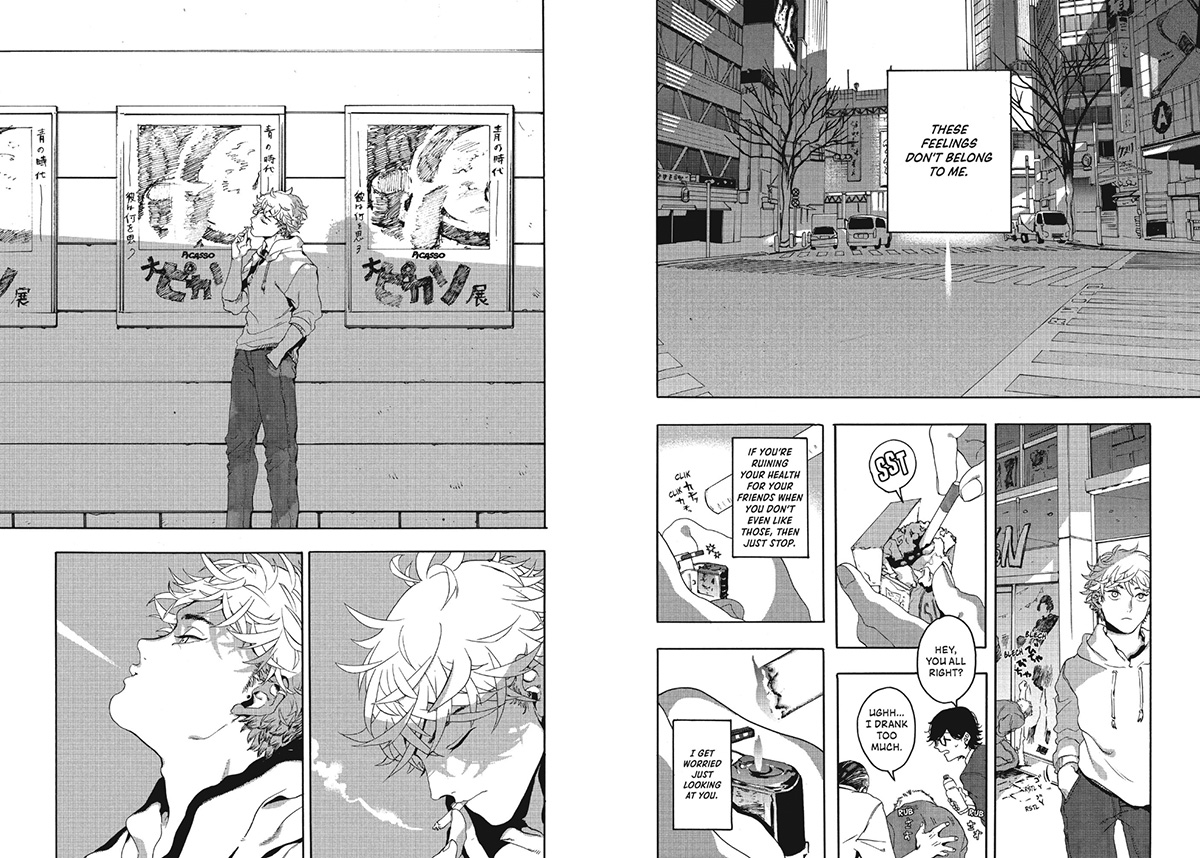
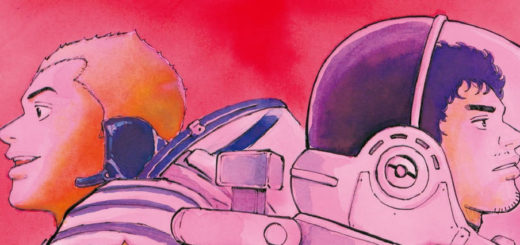
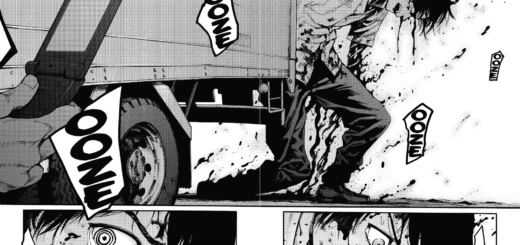
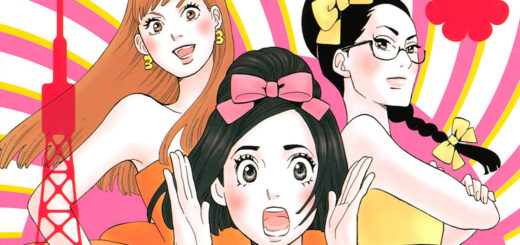
When you are covering Ajin, please consider reading first two volumes. Things go WILD in vol 2. Vol 1 barely scratches the surface.
Great episode–I watched Blue Period’s anime (a rare Netflix anime that seems like it got things right *glares at 7Seeds and its destruction of a classic shoujo manga*) and basically had the same reaction that I sensed from everyone in this chat. I liked it a lot, though I’m not quite at the stage where I am ready to start collecting the manga, but I… could be pushed there. I was never an art student, but pursued violin, dance and later theatre as a kid and teen and definitely felt some nostalgia for that time from the anime–which brought up my own mixed emotions about whether I should have pursued some of that harder, etc.
To that end I really liked hearing all of you, but in particular Deb, speak about their own experiences with art, art schools, etc. Thanks for opening up!
The sports manga discussion is interesting as I’ve always been fascinated by sports manga that isn’t about sports–and there is a LOT of it. Growing up in Edmonton and Victoria as one of the few boys in various ballet classes, I remember I was so excited in the early 2000s when that crazy shortlived DC imprint, CMX published the 70s shoujo ballet classic, Kyoko Ariyoshi’s Swan, which I only knew about from Schodt’s Manga! Manga! book.
And at first I was a little disappointed to discover, despite perhaps the best visual depiction of dance in any manga *ever*, the initial volumes essentially are just a sports manga format imposed on ballet (helped by the fact that in the 1970s international ballet competitions were a very big deal, partly due to the competitive of the cold war which is what caused chess competitions to also be sexy for a while.) And the early volumes also had a LOT of explanation of ballet terms and history that Chip’s reaction to Blue Period made me think of–as someone who knew all that about ballet I found them just a distraction (especially since CMX never seemed to do their research and made a lot of mistakes with the ballet that I think was just in the translation). But as it started to drop that, I did eventually get really invested in the characters and soap opera elements (which continue to this day in various spin-offs, which are now published in their own Swan magazine–yes, it’s THAT popular.)
But it did also make me think of how the OTHER important 1970s ballet manga was Year 24 group member Ryoko Yamagishi’s Arabesque which, while in the early volumes it follows the same plot beats as Swan (albeit coming a bit earlier), does *not* use the sports manga formula and so is a very different reading experience, using ballet much more as a metaphor for the heavily psychological storytelling. Both valid approaches to similar stories and themes that end up being completely different experiences (tellingly Swan was one of the huge 1970s shoujo blockbusters–like other Margaret blockbuster titles Rose of Versailles and THE big shoujo sports manga of the time, Aim for the Ace–whereas Arabesque had a devoted following but like the other Year 24 titles by mangaka like Hagio and Takemiya, never quite reached blockbuster status.)
(Sorry, by now I’m sure anyone who reads my comments knows I’m somehow gonna find a way to mention a vintage shoujo title in relation to what’s being discussed. However, the mention in the podcast and notes of Mitsuro Adachi’s Cross Game gets into some of this too. Cross Game, and his sports manga in general–I’m not sure if it ever got a release in English, when I was first getting into manga almost every Japanese reader I’d meet, guy or girl, would mention their deep love for Touch–are *all* about that sport and yet, unlike so many sports manga, they also are almost about everything *but* the sport. Deep, I know.)
Also, despite what Chip seems to think, I think Christopher is 100% that people read comics, and “read” subtitled movies, differently. I know from my experience with past boyfriends that I know people who really do struggle with reading subtitles and then missing visuals, which has never really been an issue for me (is that a humble brag?) I think part of it is, though, that I don’t worry about making sure I carefully read the full subtitle, as long as I get the gist, and when doing that you can just take in the entire image.
That said as of last week or so, Netflix now offers a dubbed version of Blue Period.
I’m excited for the upcoming season 3 titles (does that mean there’s a hiatus coming up soon?)
I think they’re all good (or intriguing in the case of Dick Fight Island–no, I haven’t given in to checking it out yet) choices. Deb’s choice is one of the better titles in a style of BL manga that I’m finding kinda disappointing that’s over-saturating the marketplace right now (teenage Eric would have been shocked that 20 years later adult Eric would ever say such a thing about BL manga).
I know you don’t take suggestions, and what with Our Dining Table next week, you have your BL bases covered for now (though I’m not quite sure I’d even call ODT a BL manga, as much as I love it), but after a long delay, next month Yen Press is finally releasing volume one (of two omnibuses) of Marimo Ragawa’s 1990s BL (before it was called BL) all time classic, New York New York. Though I still find it funny calling a 1990s title vintage, it’s probably the first major English release of a classic BL title that we’ve had (which is sad to think of given all the great 80s stuff–Heart of Thomas and Poe Clan don’t count, if you ask me, as they’re proto BL). And though I haven’t revisited my French copies from 20 years back, as I want to be somewhat surprised when reading the English editions, I remember it as being one of the few BL titles from that time that manages to successfully mix melodrama, actual realistic depictions of gay men, even touching on things like AIDS, and relatively hot sex scenes. Anyway, keep it in mind maybe for a future episode (I’m just hoping it sells decently and Yen considers more older classic titles). https://yenpress.com/9781975325350/new-york-new-york-vol-1/#book-description-full
I’m excited to sample MSX and hope it’s a big success! (Speaking of manga magazines, the early 2000s was when I was most aware of every English manga release, though I was mainly buying shoujo or classic stuff that we were finally seeing releases of, and yet I don’t remember Raijin Magazine *at all*. I know I would have bought at least one issue if I had come across it…)
Swan v Arabesque. BL New York New York
(Also I’ve been a Sparks fan since I was a teen, got obsessed with disco and Donna Summer and found out that her main producer, Giorgio Moroder, apparently did some of his best work with this bizarre group called Sparks that everyone said I needed to check out. From his albums with them I got to most of their catalog–and while I knew they always had a big cult following, I’m still kinda amazed how now suddenly, with the doc and the musical film, Annette, I see people writing about them and hear people talking about them in the most unlikely places. Like on a manga podcast. Wild.)
Great episode, everyone! I was waffling on reading this one., and after your discussion, I think I still am? Thanks to Eric’s comment, I might check out the anime first and then see how I feel. I know a lot of co-workers on the art team swear by this manga, so my curiosity has definitely been piqued for awhile now.
I thoroughly enjoyed each of your discussion your own journey with art and how your perspective changed over time. Personally. there was a lot of food for thought in that discussion, so thank you for sharing. (Not sure if you or the listeners have an issue with those digressions, but I’m all for when a work leads all of you down a tangential discussion.)
Interesting that sports manga came up so much this episode, with “Slam Dunk” making its obligatory appearance. As not the biggest sports watcher (I enjoy playing them, even if I lack the requisite skill for most), I was hesitant to dip my toe into the sports manga waters, until a girlfriend at the time lent me her entire collection of “Slam Dunk.” I couldn’t believe how much I enjoyed it, and Inoue’s art really does progress over the course of the series. My friend who was on a college basketball team in Japan in the late ’00s said it was almost required reading for the whole team. It’s been amazing to see Japan go from not knowing basketball to having its own league in a couple of decades. Still frustrating that unless you rent out a gymnasium there’s no public basketball hoops set up in any park. (Tennis, however…) If you do read “Slam Dunk” for the show, I think you’d have to read a few volumes covering if not one of the tournaments, at least one of the big matches in full, otherwise it would be just like watching the first 15 minutes of a sports movie.
Speaking of sports movies, sports games (e.g., Madden) are also a staple of the English-speaking pop-culture world. I wonder why we see so few sports comics, Marvel’s NFL Superpro aside.
Congrats again on MSX. Much like these episodes, I’m ridiculously behind on them, but soon (hopefully!) things in my life will settle down to where I can enjoy reading them. I even set up a dedicated folder in my mailbox for them. While were here, you could definitely turn these show notes and Eric’s comments into a book introducing people to manga. They’re that good!
Finally, this is no shade on Deb’s drawing skills (I couldn’t draw a stick figure to save my life!), but for some reason who drawing of Chip reminds me of a Curious George character, and I don’t know why.